
Many easy runners don't see frowned on the descent. They are intimidated, they think that is likely to cause injury. Not so the runners, that instead the face as any other unevenness of the ground. The hard runner lives in a positive way because he knows that on the slope you can decide the races. But he also often ignores that running downhill is also an excellent means for training specific strength of lower limbs and quickness. The goal of this article is to provide a set of practical guidelines on the most appropriate and rational way of dealing with the descent and to transform it into an effective means of training.
The importance of style
First of all some technical guidance: the descent is not making contact with the back of the heel. Is the lateral part of heel which should touch the ground first, but the feeling has to be to rest on the whole plant, not only of the heel. If your support is correct you will hear your back free and does not receive any kickback. Also feel the quadriceps work harder. Be careful not to pull back from behind, as the instinct would suggest, because doing so would advance legs too compared to bust in stance phase. With his back foot perpendicular, the racing action will be more smooth and effective. The arms must be kept as in normal race on the plain, with forearms that skim the iliac crest of the pelvis. Increasing the speed it may be that the action of the arms is broken: it is normal at the beginning, corrects itself automatically as you buy sensitivity and, above all, balance. Must point down but not forward, towards the end of the descent. Finally, downhill you will gain speed. To zoom out, simply shorten the distance. After this sort of "technical review", we enter into the details.
What is it for
1. develop strength eccentric, or that kind of strength helpful to all the runners, that muscle grows when it resists to the weight of a resistance (in this case one of his body).
2. Does capture fast action, qualities essential for those dedicated to short races, including those on the track, but also for specialists of "half" and marathons, which must develop it into periods away from that specific preparation.
3. Improve coordination; a feature that allows you to make less expensive and more effective racing action, especially in critical moments such as overtaking or the race, and that allows the runner to feel comfortable on any type of track.
And now to work!
The workouts that I propose that you will find summarized in the table below, are courses on downhill slopes from 2 to 6% and lengths from 100 to 1000 meters. For the first few times I suggest you maintain them on asphalt. Afterwards, especially if you plan on racing on dirt, you will conduct the work on rough terrain. Obviously, I recommend always concentrates on running technique. As regards heating, shall be such as to properly prepare the organism pretty intense effort that is going to accomplish. Each fast runner has a way of warming up, so it seems unnecessary to provide guidance in this regard. As regards recovery, instead the table is indicated in minutes is the one between individual repetitions and between sets. Between a descent and the other is running very slowly, preferably back to the starting point.
Five workouts to try
|
Slope the descent |
Length the descent |
Number by series |
Number of repetitions for series |
Recovery between the repetitions |
Recovery between sets |
|
| Proposal 1 | 2-3% | 100 m | 2-4 | 3-5 | 3 ' | 6 ' |
| Proposal 2 | 2-3% | 200 m | 2-4 | 2-4 | 3 ' | 6 ' |
| Proposal 3 | 5-6% | 200 m | 1 | 10-20 | 3 ' | - |
| Proposal 4 | 3-5% | 500 m | 1 | 6-10 | 3 ' | - |
| Proposal 5 | 2-3% | 1000 m | 1 | 3-7 | 5-6 ' | - |
(BY Kirti Mah)
An original and exclusive launch is what you would expect from Garmin Italy for three new products dedicated to the world of running race: Forerunner Forerunner 630 and 230 to which is added the Forerunner 235, the first device with heart rate measurement directly on your wrist using Garmin technology Elevate ™.
 Garmin Forerunner 630 is the new sportwatch dedicated to running combining high-tech features of its predecessors the ability to gather data on the physiological condition of the athlete, that way even more conscious of its form and then be able to better manage stress during training or competition. Innovative new Advanced Racing Dynamics: bound to HRM4-Run heart rate monitor provides values about Cadence, ground contact time balanced between right/left foot and vertical oscillation, and is able to estimate maximal oxygen uptake (VO2max). But it is in two functions that the FR 630 is really unprecedented: the "anaerobic threshold" athlete's heart rate deflection threshold is estimated based on heart rate and pace of the athlete, and with Stress Score measured heart rate variability to evaluate the overall condition of the athlete to set the right workloads.
Garmin Forerunner 630 is the new sportwatch dedicated to running combining high-tech features of its predecessors the ability to gather data on the physiological condition of the athlete, that way even more conscious of its form and then be able to better manage stress during training or competition. Innovative new Advanced Racing Dynamics: bound to HRM4-Run heart rate monitor provides values about Cadence, ground contact time balanced between right/left foot and vertical oscillation, and is able to estimate maximal oxygen uptake (VO2max). But it is in two functions that the FR 630 is really unprecedented: the "anaerobic threshold" athlete's heart rate deflection threshold is estimated based on heart rate and pace of the athlete, and with Stress Score measured heart rate variability to evaluate the overall condition of the athlete to set the right workloads.  alongside the Forerunner Forerunner 230, 630, Garmin has a GPS running watch that lets you record data of distance, time, heart rate. But not only that, it also able to estimate maximal oxygen uptake (VO2max). This is a really important through which the tool provides a prediction of the end time of a competition, but above all it is useful to identify the proper recovery time between workouts. As well as the Forerunner 630, also functions as a real fitness band.
alongside the Forerunner Forerunner 230, 630, Garmin has a GPS running watch that lets you record data of distance, time, heart rate. But not only that, it also able to estimate maximal oxygen uptake (VO2max). This is a really important through which the tool provides a prediction of the end time of a competition, but above all it is useful to identify the proper recovery time between workouts. As well as the Forerunner 630, also functions as a real fitness band.
Forerunner Forerunner 230 630 and are provided with colour touch screen. By joining to your smartphone via smart notification, you can receive on the wrist warning device messages such as email, SMS, incoming calls and calendar notifications, so you have everything under control to stay connected with friends and family. Via Garmin Connect IQ ™ software platform the sportwatch can be customized with applications, widgets, screens and new data fields, so as to make it more functional for your needs. Forerunner Forerunner 230 and 630 are able to download, via Wi-Fi ®, the data directly and automatically on Garmin Connect through your smartphone and the Garmin Connect Mobile application.
 The Forerunner 235 is a real jewel of technology that goes into the path of technological evolution of Garmin. In fact, the new sportwatch can record heart rate values data without using the chest strap, but acquiring the pulse from the wrist thanks to the company's proprietary technology: Garmin Elevate ™. These and other values are displayed in an easy-to-use color interface, so that every athlete has the opportunity to keep monitored the progress of a workout or competition. The new device provides important data for the modern runner: Besides distance, speed, pace and heart rate, Garmin 235 is able to estimate the maximal oxygen intake. The value of VO2max is important to identify the right recovery time between workouts, as well as providing a prediction of the end time of a competition. The color touchscreen display shows the data recorded in a clear and intuitive, so as to ensure the athlete the concentration needed to achieve his goal. Forerunner 235 provides smart notification functions with which you can view directly on the device, from their smartphone, call, sms and email notifications. Using audible alerts, the athlete is kept informed on the progress of the race and then motivated to keep up the pace. Simple design and unobtrusive, they can be worn every day, working also as a fitness band. Garmin Forerunner 235 is compatible with the new Connect IQ ™ platform that can be customized with data fields, applications and widgets, making it even more functional to the needs of athletes.
The Forerunner 235 is a real jewel of technology that goes into the path of technological evolution of Garmin. In fact, the new sportwatch can record heart rate values data without using the chest strap, but acquiring the pulse from the wrist thanks to the company's proprietary technology: Garmin Elevate ™. These and other values are displayed in an easy-to-use color interface, so that every athlete has the opportunity to keep monitored the progress of a workout or competition. The new device provides important data for the modern runner: Besides distance, speed, pace and heart rate, Garmin 235 is able to estimate the maximal oxygen intake. The value of VO2max is important to identify the right recovery time between workouts, as well as providing a prediction of the end time of a competition. The color touchscreen display shows the data recorded in a clear and intuitive, so as to ensure the athlete the concentration needed to achieve his goal. Forerunner 235 provides smart notification functions with which you can view directly on the device, from their smartphone, call, sms and email notifications. Using audible alerts, the athlete is kept informed on the progress of the race and then motivated to keep up the pace. Simple design and unobtrusive, they can be worn every day, working also as a fitness band. Garmin Forerunner 235 is compatible with the new Connect IQ ™ platform that can be customized with data fields, applications and widgets, making it even more functional to the needs of athletes.
For the launch of three new products dedicated to running race, Garmin Italy fly overseas for preview, and exclusively to a group of Italian athletes entered in the 42 kilometers of the Big Apple, the new offering designed for demanding runners family Forerunner, as the four hundred Italians shipment Born To Run the New York City Marathon of the upcoming November 1 that on the eve of the race will be able to participate in the Gala presentation of new sportwatch Garmin. But not only because these marathoners will experience first hand the products over the collective training planned in Central Park with the Athens 2004 Gold Stefano Baldini and Fulvio Massini trainer known in the days before the big event.
 The highlight of the initiative will be the day before the marathon, Saturday 31 October, with the exclusive meeting between the technicians and the 400 members of the expedition of Born To Run: on this occasion will host the premiere of Forerunner 630, 230 and 235, with the invaluable advice of champions, coaches and technicians, on the proper use of new sportwatch. In fact, to witness the christening of Forerunner there will be Stefano Baldini who alongside Shashi Magar and Silvia Schiapparoli (sports & Outdoor Marcom Manager of Garmin Italy) will run the New York City Marathon wearing the three newcomers.
The highlight of the initiative will be the day before the marathon, Saturday 31 October, with the exclusive meeting between the technicians and the 400 members of the expedition of Born To Run: on this occasion will host the premiere of Forerunner 630, 230 and 235, with the invaluable advice of champions, coaches and technicians, on the proper use of new sportwatch. In fact, to witness the christening of Forerunner there will be Stefano Baldini who alongside Shashi Magar and Silvia Schiapparoli (sports & Outdoor Marcom Manager of Garmin Italy) will run the New York City Marathon wearing the three newcomers.
Of course Garmin Italy will be supporting all our countrymen: in the days before the competition Italian staff will be present at the expo area of the New York City Marathon, the nerve center for the withdrawal of the breastplate, to provide assistance and "support" to the thousands of Italian runner. All project related to the launch of the new Forerunn will be documented by a video that will be produced and "shot" (including the race) with the action cam Garmin VIRB XE.
Garmin Forerunner 630 will be available in the best stores from November 2015 at a suggested retail price of 399.00 Euro and 449.00 euros for the version bundled with heart rate monitor. To purchase it from MOTUS at the discounted price of 339.15 euros (381.65 euros in the bundle version) CLICK HERE
Garmin Forerunner 230 will be available in the best stores from November 2015 at a suggested retail price of € and 249.00 299.00 euros for the version bundled with heart rate monitor. To purchase it from MOTUS at the discounted price of 254.15 euros (296.65 euros in the bundle version) CLICK HERE
Garmin Forerunner 235 will be available in the best stores from November 2015 at a suggested retail price of 349.00 euros. To purchase it from MOTUS at the discounted price of 296.65 € CLICK HERE
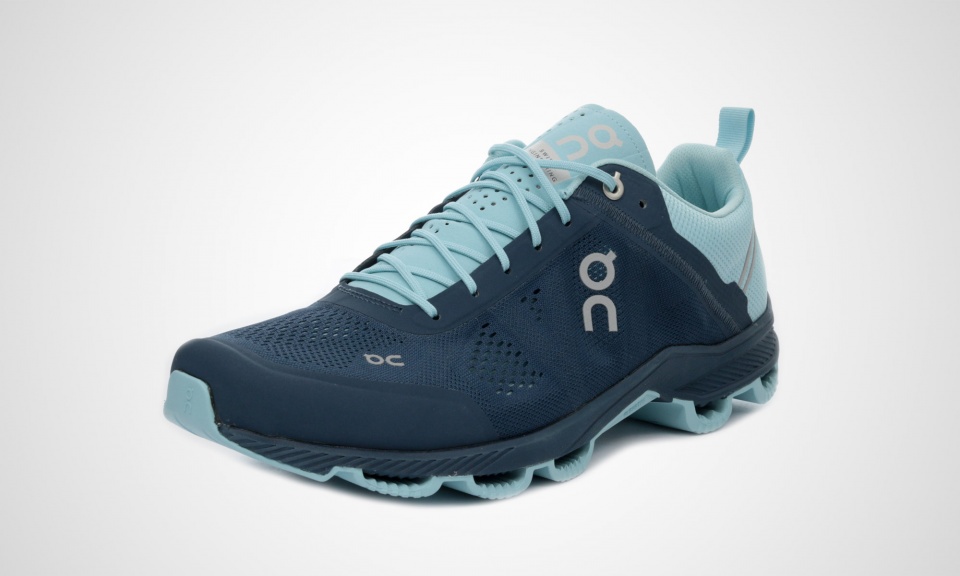 On: A totally different running sensation.
On: A totally different running sensation.You can still come up with something in the field of running shoes? You can, so they thought those On a few years ago.
Olivier Bernhard and his friends David Allemann and Caspar Coppetti thought that perfect shoe have not yet made any. Olivier was a champion duathlon which often had suffered from tendinitis. He was convinced that it was because of the shoes. Talked to his friends and together they began to do prototypes. The idea – like all brilliant ideas – is that running develops energy that is dissipated: is discharged to the ground, but for whose benefit? About what? Better to recover it, to give the runner a new and fuller running experience. Thus was born the idea of a patent which stores the energy accumulated during the compression phase and releases during deadlift, increasing the energy developed in the deadlift, but in pure mechanical form. Makes it so more efficient running.
Well, it's not the tube itself has persuaded. It is more correct to say that this tube was used to create the first prototypes: do they cut a few centimetres long, the sections they glued under the sole and came up with a prototype that contained the germ of future form: cloud, cloud-shaped section feature that characterizes the cells of these innovative sole shoes.
The cushioning – thought the three friends – only works during compression: reduces that is pushing the foot down. But there's no jumping like kangaroos. It is pushed forward. Then why not exploit this energy stored? Yes, but how? Reinventing the cushioning system, which does not just softens but it loads like a spring, to release during deadlift, making the ride more smoothly and efficiently, as well as more natural. And "natural" is another interpretation of this revolutionary footwear: its inventors wanted the feeling of racing was as natural as possible: they wanted to feel the road beneath the foot (compression) and harness energy when the foot comes off the ground.
Is the promise of the founders of On, born in October 2012 in 2010 and that operationally sold the 100millesimo pair of shoes.
The sky is full of clouds, but are clouds that do not bring rain and they are soft. And push us towards new roads.
The ons are available from MOTUS rates ranging from 114 € to 153 € in Italy. To purchase online, click here.
(By Martin Pietropoli -From RUNLOVERS)
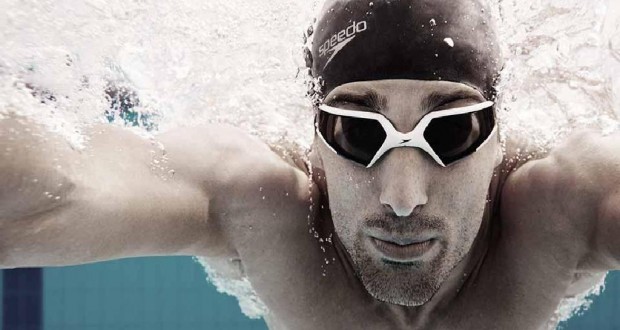 Treat them and clean them well will lengthen their lives.
Treat them and clean them well will lengthen their lives.
One of the problems common to all swimmers, professionals and amateurs, fogging of glasses. How many times have you gone mad behind this issue and how many glasses you have changed for this reason? Well, extend the life of our glasses is not impossible, just observe a few simple rules.
Because the goggles fog up?
The goggles fog up because of the heat and moisture generated by the body. This generates condensation that goes to form on lenses that have a very different temperature. To increase the chance that the goggles are tarnish, grime that accumulates on the lens if not cleaned well after each use loupes. We are talking about just the patina that are formed after a while you use the goggles.
The goggles are normally equipped with an anti-fog film but it is not indestructible as the shield of Captain America! Has a finite lifetime according to the use that is made of glasses. Some brands of glasses last longer, others less, but everyone sooner or later end up tarnishing. But sometimes it happens that a couple of new or used few times, cloud. In that case it means that there is a difference in temperature and humidity too high between the locker rooms and the bath floor. To protect itself from this issue, it is good to fill the glasses of warm water from the fountain inside the locker room, at least ten minutes before entering the tub floor. This precaution will help the glasses to adapt more gradually to the temperature difference they will encounter.
 How to treat and store the goggles
How to treat and store the goggles
The first thing to do is to never touch and in no way the lenses, neither outside nor inside. Try to clean the lens strofinandoci fingers, cloths or towels, because scratches and damage to the film anti-fog coating or whatever remains after using the goggles off a number of times. In any case, touch the lens makes them more vulnerable!
Clean the glasses gently and with fresh water after each use thoroughly before storing them in a case, in order to eliminate residual chlorine that attack and damage lenses and straps. Once at home, it's good to let them air dry. Leave the glasses inside the bag, perhaps wrapped in towels, goggles will come into contact with moisture and bacteria that cause premature aging.
It is also important not to expose the goggles toward heat sources that can change its shape and deteriorate the quality of the lenses, reason for which it is better not to use hot water when washing.
Glasses should be cleaned thoroughly after each use will prevent the formation of the patina of dirt that also contributes to the formation of tarnish on the lenses.
 How to avoid fogging of glasses
How to avoid fogging of glasses
We arrived at the focus of the argument! Among the swimmers are said by various methods to prevent fogging of glasses but they often turn out to be ineffective. From shampoo to rub on the lenses to toothpaste, dish SOAP to soda (which is fine for the silverware), until you get to the more classical method that involves the use of saliva. None of these methods help prevent fogging goggles really.
Distilled water and white wine vinegar are the answer. You must soak the glasses in warm distilled water mixed with five tablespoons of white wine vinegar and let it soak, ben, for about two hours. Then you need to rinse the glasses again with distilled water and allow to air dry completely, without using any cloth, before storing them in their custody. Some athletes also use the anti-fog spray that simply contains water, isopropyl alcohol and detergent but involves the use of a cloth.
(Taken From Swim4life)
MOTUS is dealer of swim goggles to SPEEDO race training ARENA or JAKED ZOGGS ZONE3
For details and goggle purchases CLICK HERE
 The brand X-BIONIC X-SOCKS & underwear as official supplier of the UCI Professional Continental cycling team Team, as authorized by GAZPROM-RUSVELO is pleased to announce that for the first time in history will take part in a World Tour. The team was named one of the teams that will take part in the upcoming tour of Italy from 6 to 29 may, as announced by Rcs Sport, organisers of the event.
The brand X-BIONIC X-SOCKS & underwear as official supplier of the UCI Professional Continental cycling team Team, as authorized by GAZPROM-RUSVELO is pleased to announce that for the first time in history will take part in a World Tour. The team was named one of the teams that will take part in the upcoming tour of Italy from 6 to 29 may, as announced by Rcs Sport, organisers of the event.
The Director of the tour of Italy, Mauro Vegni, explained the choice of organizers: '' In recent years we have followed the philosophy of supporting cycling Italian and simultaneously to enhance requests that come from teams around the world. For this we wanted to protect the Italian cycling but also look to international development, which is one of our goals. A concept that applies to all races and is one of the pillars of our strategy for making the final selection of the wild card ''
X-BIONIC & X-SOCKS has made available to athletes all technology products to meet their needs.
MOTUS is official dealer of products X-BIONIC and X-SOCKS. The shop in via Mecenate 18 in Arezzo (AR) or in the online store www.motusport.it and www.motustriathlon.com you can find for you a whole portfolio XBIONIC and XSOCKS at discounted prices.
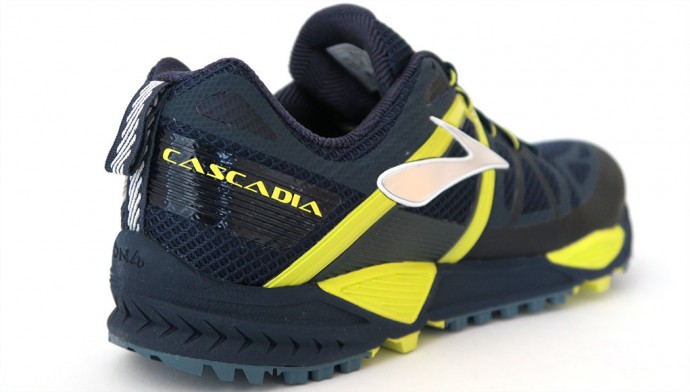 NOBLE ORIGINS
NOBLE ORIGINSGuys, we're going to talk about Scott Jurek shoe! That is, you know those SJ? Practically the Cristiano Ronaldo of ultratrail. He runs, he is the race!
Is one of the lucky few to have run with the tarahumara and Caballo Blanco in the history then told in the book Born to Run!
There is something about Scott Jurek but to figure out what he did for this race man is really hard, even to imagine. Suffice it to say that won over and over again all the more tough u.s. ultramarathons.
But one thing is certain: it has developed and continues to do so along with Brooks on top of the range product Trail proposed by American brand, the Cascadia arrive at precisely 10 version of a long history of success and only universal appreciation.
SJ is Seattle – first among the top ultra marathon coming from California and Seattle – training in the mountains near there that (coincidentally) named its Cascades, from which they take their name shoes we are discussing today.
Brooks, with his proposal, remains faithful to a motto that will never tire not: "if one thing works so well, why change it?". And, in fact, an evolution of the shoe over the years have always been measured and carefully designed not to upset a shoe that is a clear point of reference for Trail Running.
Just wear the version 10 you realize immediately that is a Brooks: soft and comfortable fit, wide plant ideal for a neutral runner, and an immediate good overall feeling.
Then you start running and if you tried in your life some other version of the same shoe you feel like Sunday lunch from relatives, family and perfectly at ease! You know where to find the glasses, plates, cutlery and even the breadsticks!
Our Euganean Hills and the Tuscan hills are two great gyms to test the Cascadia. Nearly all dirt, except rare pieces of asphalt, enhances off road nature of that shoe, right on hard bitumen, doesn't like being.
Uphill: phenomenal grip, high toe box very effective to overcome hardships and obstacles, beautiful general protection, perhaps a bit heavy and very structured, and then – to be puntugliosi – not perfect for fast runners.
Downhill: exciting! Amazing new grips, put even more highlights from extreme conditions of stony and Sandy, excellent damping response in all areas of the plant, robustness and solidity are perfect to keep in line the foot and guide him to support safe and accurate. Easier support for "classic" bead one more forefoot technical downhill, but there may be.
Top: good overall feeling, comfort and excellent protection, all pretty compact and protective, perhaps slightly heavy again and upgrade, better suited to a "classic" race which in a more natural and technique.
The tip ben "bananata" upwards with a good sole flexibility make the perfect shoe on dirt to tackle all obstacles, even the stones and most bitter roots. And the grip of the sole is, as always, at the highest levels; though tessellation is slightly modified from previous versions.
Sole and midsole offer a system of protection against bumps perfect, going to "cover" the foot where it must be better protected; rocks and pitfalls are just, no hassles. The foot rests on a system totally suitable to do what this shoe is born: protect!
Two interesting news in my opinion are perceived with "listening ear" at the level of support and comfort.
Foot inside the "cage", introduced since the previous release, stiffens the skeleton for support and holds more shoes in "location". The aim fully achieved is restricting settlement inward of the foot due to faulty bearings on uneven ground.
The sole, I remember always what I liked least of Cascadia (because "rigidona" good pair of trail shoes classic), now a whisker appears softer, less dry and actually one of the biggest news is right here. Classic Eva compound is enriched on the heel from technology already adopted towering footwear of American home, the BIOMoGo, which allows DNA cushioning and adaptive energy return. If strong peaks returns if it returns plan light peaks. A novelty that I personally appreciate a lot and that especially in long distance offers a pleasantly comfort level higher than previous versions. Perhaps I would have preferred the perception of this action more marked in the forefoot area.
Also interesting is the mesh fabric shoe moisture leaving feet always dry and well ventilated. At the same time the tip is strong enough not to convey any (and usual) "fritters" stones and branches scattered here and there, but the inserts do not ruin the fit with unnecessary seams fastiodiose to handle. .
The shoe weighs 320 g, extremely light, not a classic weight for a product from running Classic. It has a drop of 10 mm, not too addressed to a midfoot, but more conducive to a neutral heel race, even over long distances. It is ideal for every kind of runner, even for the more "heavy", and you can run all distances. By light and fast trail to longer runs and "pushes". A truly universal shoe for everyone. We say that in the world of off-road vehicles account for a Jeep Grand Cherokee, fully equipped and suitable for all terrains and in all drivers, even the less prepared. We can do dirt sitting comfortably on comfortable leather seats and turn on the air conditioner. A shoe that leaves no room for surprises, a proven formula and reliable.
So what about? Comfort, durability, support and General pleasantness strength, grip, what more could you want from a shoe? The only fault of Cascadia is, in my opinion, to offer a formula so tested and functioning well, which is no longer able to amaze. Is loyal and ready to respond to all needs, without ever overdoing it and getting lost in technological excess or in strange philosophies, which maybe can be charming but surely are hard to master.
A shoe so textured (maybe too?) and not very suitable for a natural minimalist travel so much is fashionable even among the best ultrarunner (Kupricka and Gaspar, to name two), and if we just "fast", and not able to make you fully enjoy the relationship with the land that will run under your feet. However the percentage of runners who really knows a minimalist shoe and netural, moreover, trail is very little compared to the mass of runners "classics". And it is to these that the Cascadia Tip 10: a product that is ready to meet the needs of every athlete, more or less experienced or tapascione that is. Word of Scott Jureck: very little tapascione, but that if it continues to run through all those km there is a reason! :-)
Enrico Sah
(SOURCE RUNLOVERS.IT)
YOU CAN PURCHASE YOUR BROOKS CASCADIA 10 on MOTUSPORT.IT: CLICK HERE
 MOTUS is a shop specializing in the sale of products, clothing and equipment specific to the practice of the triathlon. Among the brands sold by MOTUS could not miss the Italian constructor of bicycles from KUOTA, always attentive and present needs of practitioners of triathlon. With pleasure we announce partnership agreement signed for 2016 with an important Italian club.
MOTUS is a shop specializing in the sale of products, clothing and equipment specific to the practice of the triathlon. Among the brands sold by MOTUS could not miss the Italian constructor of bicycles from KUOTA, always attentive and present needs of practitioners of triathlon. With pleasure we announce partnership agreement signed for 2016 with an important Italian club.
Kuotacycle and 707 Triathlon Team are proud to announce their partnership from the 2016season. The formation led by Germano Raddi will see so athletes such as Gregory Barnaby (1991), Richard Moved (1994), Gabriele Salini (1982) and Elisa Machado (1994), Sprint and Olympic distance specialists, ride on bikes Kuota.
The company brianzola strengthens its presence in the world of triathlon, where she always picked up great results, confirming fact attentive to technological innovation applied to the sport of 2 wheels.
The agreement with a team such as 707 represents the completion of the project triathlon Kuota that counts among its pillars athletes long distances as Danilel fountain, Andi Boecherer, Matteo Fontana and Martin Chapman. Kuota is committed in the events of the threefold discipline also with Trio Events together with other prestigious partners such as Garmin, Oakley and Santini. Within this project, in September, there is the KuotaTrioPeschiera where 707 athletes will be safe.
The team's objective 707 is to grow the finest talents in triathlon and in 2016 be with some of its members at the Olympics in Rio. Competitive ambitions cover also the Italian Championships triathlon and duathlon and appointments classics like Bardolino.
 Here's a video that compares two stunning time trial bikes (bikes for triathlon or time trial): KUOTA KALIBUR and KUOTA KT05. To illustrate the technical features of these bikes KUOTA, two triathletes professionals of the highest level: the Italian and German DANIEL FONTANA ANDI BOECHERER, both KUOTA BIKES testimonials.
Here's a video that compares two stunning time trial bikes (bikes for triathlon or time trial): KUOTA KALIBUR and KUOTA KT05. To illustrate the technical features of these bikes KUOTA, two triathletes professionals of the highest level: the Italian and German DANIEL FONTANA ANDI BOECHERER, both KUOTA BIKES testimonials.Very special is a historical name for white people, and not just because the term "specialissima" came into common usage in the past, but it is still used today to indicate the bicycle racing tout court.
La casa di Treviglio has recently repeated this pattern going to fill a gap in its range, that is a super lightweight bikes suitable for climbing. Not that the Addition, in its various incarnations, it wasn't a bike suitable for this kind of exercise, but probably the turning point that has taken the market this year, which is seen a more pronounced differentiation between bike aero and ultralight, whites have decided to offer this model, with evident conviction, much to commit to baptize with a name so important in the history of whites.
We come to the characteristics on which they aimed to realize this model. Design actually not found nothing remarkable. The very special presents solutions not unusual, no shock, no integrated brakes or alternate locations. The design is rather "classic", at least for modern carbon bikes, with volumes well proportioned.
The novelty of this bike is found throughout "inside", in construction, and being a Baird this translates into technology Countervail ®. This technology is now used by a few years, since the introduction on Infinite HP, on bikes in Treviglio, and is a feature where Baird believes. Briefly it is a viscoelastic material patented by Material Science Corp. that is "drowned" in layup of carbon frame, and thanks to the mechanical properties of this material reduces the vibrations transmitted to the rider.
If in the case of Infinite HP, bike dedicated to endurance (or Eagle CV for long triathlon) this has a Special interest in the case of understandable at first turns out less. In fact the purpose of this technology applied to a lightweight frame is not so much to make it more comfortable over long distances, but to make it more manageable and less "nervous", a characteristic that is often criticized in this kind of frames.
The chassis of the very special is given to 780gr in size 55 (black coloration, heavenly version of something more). The bike in the test, in size 59 had a weight of 6 kg. Mounted bike Campagnolo Campagnolo Bora tubular SuperRecord full 35 tires Vittoria Corsa CX 23 mm, stem, handlebars and seatpost FSA Os99, sella San Marco Aspide Superleggera. Treated details such as White tradition, with expander Plug and seat clamp CarbonTi in light blue. The geometry is the same as the Past, then a really racing geometry for a bike "race ready".
Besides, this bike was developed in close cooperation and with many road tests by professionals of the Lotto-Jumbo, as was explained during the presentation of the product, and the request, almost obsessive, aside of the runners was "more stiffness." Stiffness, rigidity, stiffness.
Already during the presentation an episode ago well understand if this goal has been reached. After a short transfer to the plain, and after a climb of 7 km, which is obviously appreciated the levity, the whole group of testers and various journalists he threw downhill. The stop-down end everyone looked smiling and exchanged glowing expressions about the capabilities of discesistiche very special.
This kind of impressions though are always to be taken with the tongs. Normally the presentations the bikes are prepared to perfection, new, shiny, the company's staff is enthusiastic and obviously trying to communicate this enthusiasm, and last but not least there is a certain "ingarellamento" among those present. Things change often during actual tests on its streets, on its slopes and with their references. And above all, day after day, come to light any issues and you notice the differences with their "database" of proven products. In the case of very special but the feeling day by day downhill was always the same, or excellent.
Uphill the bike is clearly appreciates for its lightness. Top mount, wheels, makes a difference. So much so that even pays attention to ratios "garaiola" 52-36 of semicompact crankset. Downhill but this bike is really "special": confidence is total. Even from the first descent seems to have used it for months. In particular the difference with other bikes ultralight or similar weight is the great stability. The bike also over asphalt or asphalt irregularities ruined passes without "kicking", as if the frame was 1 kg. If this dependent Countervail or weight/rigidity ratio I couldn't tell, but the capacity of this downhill bikes are obvious. The safety that is such that it is brought to push off the hairpin turns and remove a few seconds to their best on segments Strava (which in fact arrive). Also respect the Past, with which it shares the geometry, this very special is less nervous and requires less corrections inside of bends. Downhill so it's a blast. I recently tried the Trek Émondathat already I had surprised her as excellent downhiller, but this White also has a tad more, well served by Bora 35, which I believe are confirmed as wheels of reference in General.
Having experienced in quick succession the Émonda and the very special feels natural to compare, given that they are the same type bike ultralight. Are bikes that uphill makes a great time obviously, thanks to the very low weight, but that even compared to a few years ago, do not pay the downside of being "angriest" and little intimidating downhill, indeed. Difference between the two bikes is the convenience that the Trek is more pronounced due to bending the seatpost and a geometry somewhat less racing (higher head tube to the same size). Not that the special is a bike uncomfortable, and for performance are both great, but the Whites have a soul a little more racing and uncompromising, with a "tip" into more downhill (and a look more successful according to the writer, but they are personal tastes).
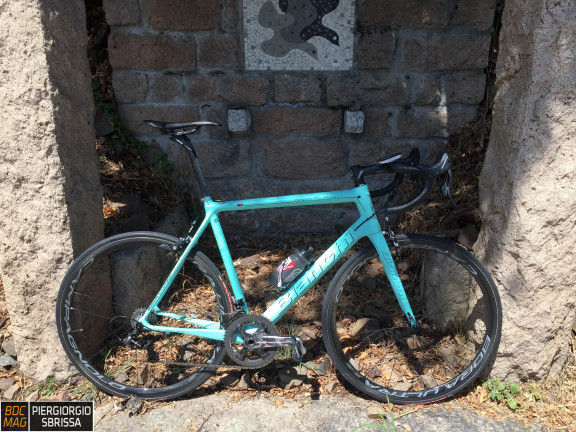
A bike with no leaks then? Well, the cost of 4000eu for the frame only and almost 10000 for the complete bike are "much" as they say ... so lucky who can afford it. For others it remains only to the classic "If you won the lottery ...".
By Piergiorgio Sablan in Magazine, Test 32
 Here's a video that compares two stunning time trial bikes (bikes for triathlon or time trial): KUOTA KALIBUR and KUOTA KT05. To illustrate the technical features of these bikes KUOTA, two triathletes professionals of the highest level: the DANIEL FONTANA Italian and German ANDI BOECHERER, both testimonials to KUOTA BIKES.
Here's a video that compares two stunning time trial bikes (bikes for triathlon or time trial): KUOTA KALIBUR and KUOTA KT05. To illustrate the technical features of these bikes KUOTA, two triathletes professionals of the highest level: the DANIEL FONTANA Italian and German ANDI BOECHERER, both testimonials to KUOTA BIKES.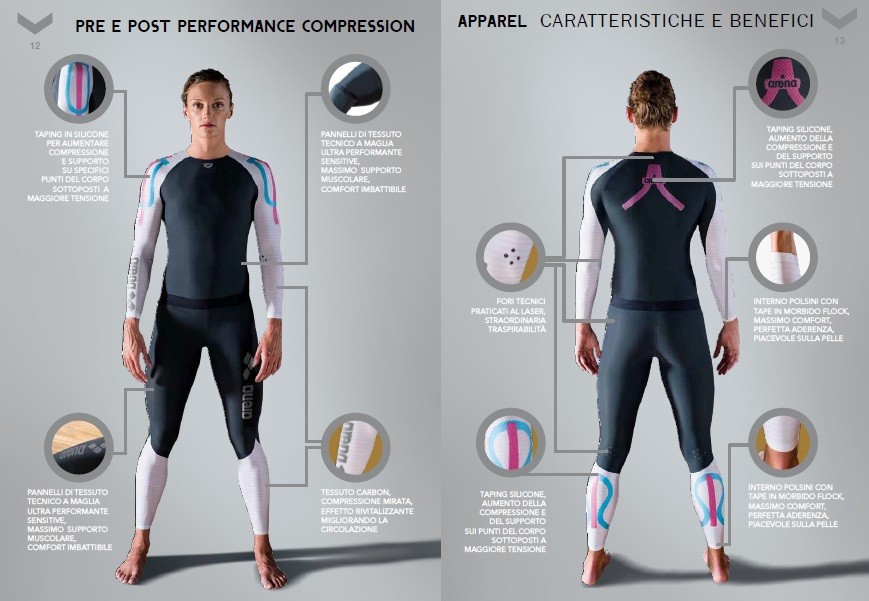
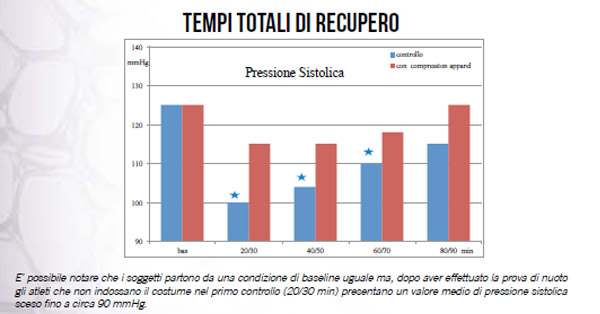
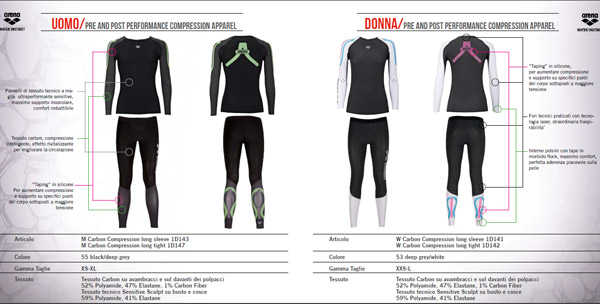
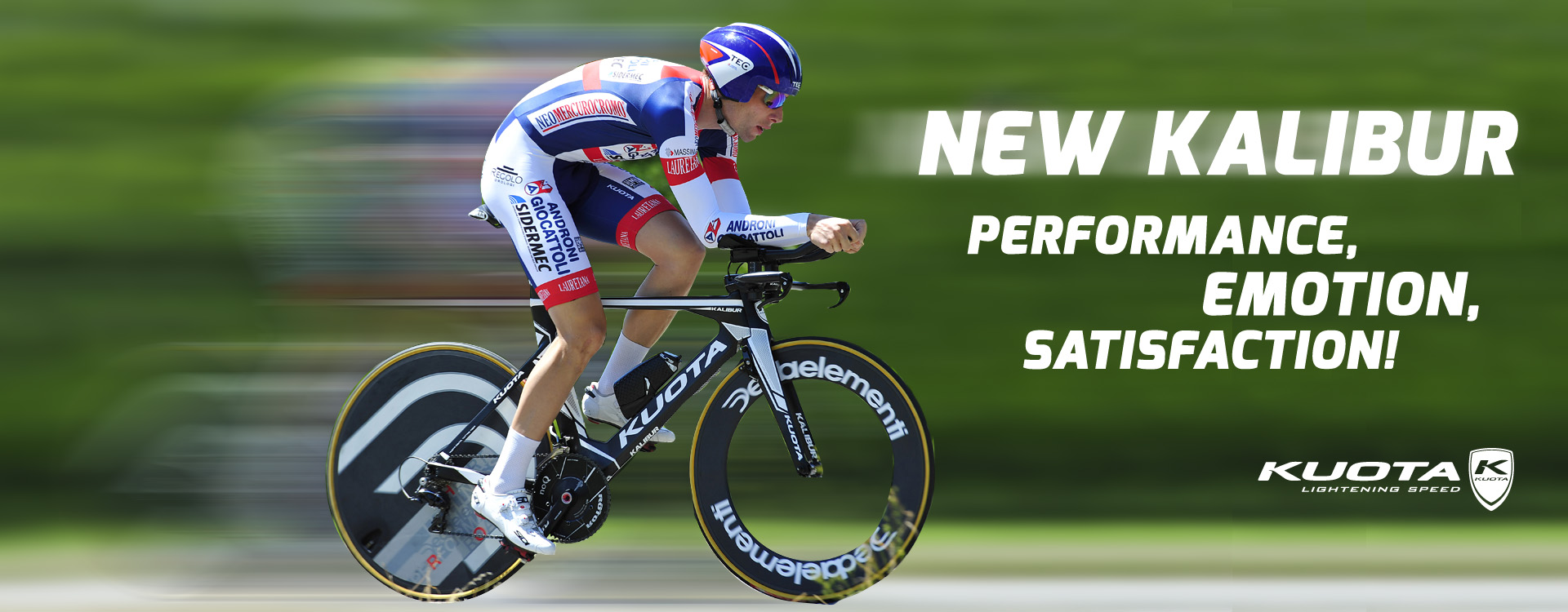 MOTUS is KUOTA bicycle retailer.
MOTUS is KUOTA bicycle retailer. Compression costumes help recover
Compression costumes help recover The functional effects that you are using "graduated compression" garments are known and used for some time in vascular medicine. The word "graduated" means that the garment is constructed in such a way as to compress (the compression is measurable in mmHg) with greater intensity the peripheral districts of the body, then gradually reduce its action by approaching the heart; The elastic stocking, which decreases its compression in the foot-calf-thigh passage. Even in sports, it is time to take advantage of these properties.
This article introduces a study on the use of these garments to assist in the post-race recovery of the swimmer.
In the sport the first application of a known compression garment was at the 1998 World Cup when French national players wore during elastic socks tournaments with the aim of improving performance through increased oxygenation and more Rapid disposal of toxins in the calf muscle. Next, a great deal of interest has developed on the subject and there has been widespread diffusion in various sports disciplines; At the same time, however, there has been much confusion about the effects and the correct use of this kind of clothing. Multiple research on the topic - over 500 works of scientific interest had already been published in 2013 - did not lead to easy interpretations because of the multiplication of effects of multiple elements such as:
The type of worn clothing (31 different knitwear, tights, overalls, sleeves, shorts, socks, leggings),
The compression level (typically from 10 to 40 mmHg),
The type of sport and the duration of the activity studied (sport of strength, resistance, combat, ...),
The use for which it is worn (before, during, after the race or in the workouts)
At the choice of the best marker to check the fatigue status and hence any effects produced by the dress.
According to several authors, wearing a compression garment during the competition does not lead to an improvement benefit (Doan 2003, Duffield 2008, Ali 2010). The athlete in the race perceives greater proprioceptive control of the movements and less muscular vibration, however showing little effect on the quality and performance of the gesture. Moreover, ethics are highly discussed, particularly in the cycling and athletics disciplines, the advantage that can be gained from wearing this garment in competition because it is considered capable of providing a "non-natural" mechanical action supplementary to the effort of the 'body. Depending on the intensity and duration of the exercise, it may be useful to wear them in particularly stressful and prolonged workouts that can produce stress on the muscles (Chatard 2008). Instead, it is less useful to wear them in the pre-competitive phase, where their effect is primarily directed to maintaining bodily warming. The most interesting indications come from studies that have investigated the action of compression clothing as the adjuvant post-recuperation stage (Jakeman 2010, Born, 2013).
As a result of a sports activity, the training methodology identifies three types of recovery, which we can classify according to their duration:
Immediate recovery, which can be identified in the inevitable breaks to replenish the individual motions that the athlete repeats to train. Swimming, by its motor cyclicity, alternates muscle contractions and decays, and in the latter one identifies immediate recovery.
The second short-term recovery plays a very important role during the refreshment stages in interlocked work blocks and involves all the parameters responding to "first" against stress.
The third long-term (training recovery), takes into account the accumulation of unresistant stress factors and the chronic effects of training.
Swimmers have the problem of recovering the best efforts in close times and in the various stages of competitions. There is therefore a problem of "short-term recovery" - which is indicatively dependent on the subject's level of training and keeps the body altered for about 1.30 / 2 hours in the post-race - but at the same time to the additive effects that Several short-term fatigues determine in the days following the first test.
Among the most commonly used recuperation practices in swimming are the active recovery methods (Toubekis, 2005/2006/2008) - gymnastics / stretching and swelling - and passive recovery - with various types of massages - while you are They are experimenting with other techniques, such as electrostimulation (Neric 2009), temperature-controlled baths and the use of compression costumes. In the latter, the choice of material to be worn is geared to what the market, mainly cycling clothing, provides. Technical development, however, could not go beyond studying a specific material for swimmers, paying particular attention to the peculiarities of the natatorial performance and among these, not least, the different influence of gravity action, with the athlete's body position Which passes from orthostatism to clinostatism. Arena Italia has been studying its compression costume for two years and the final product has been tested in the Laboratory of Engine Science at the University of Bologna.
The protocol defined for the test consisted in monitoring the trend of some fatigue indicators after having performed 12 swimmers of a good level, a maximum swim test on 400m crawl distance. The swim test was repeated on two different days, when wearing the compression costume (Powerskin Recovery Compression, Arena, Macerata, Italy) and once without. The aim was to check whether, wearing the compression cost during the recovery phase, variations (statistically significant: p> 0.05) were observed in the monitored parameters, compared to the control condition ie without wearing the costume. Prior to each test, the baseline was defined as the state of complete resting of the body, monitored in "continuum" for 15 minutes, in a room with comforting temperature, soft lights and no sound disturbances.
The neuro-physiological indicators considered were different Emodynamic Parameters (Pressures, Volumes, Flow, Resistance) and the Autonomic Nervous System (ortho / parasympathetic action).
After the registration of the "baseline" the subjects performed a standardized heating and followed a 400m maximum swimming test, where total and partial times and arm frequencies were measured. At the end of the swim test, the subjects returned to full rest and the recovery phase was monitored. As mentioned above, the same subjects were tested, with the same procedure, in two different days, with and without compression costume. Here are some of the most significant measurements of the different measured parameters.
Graphs (1 and 2) show the dynamics of "blood pressure". In all charts, the first step left on the abscissa axis is the baseline. Next, the time analysis shows the four recovered periods of investigation: from 20 to 30 min, from 40 to 50, from 60 to 70, and from 80 to 90 after the effort. The blue bars indicate the average values of the parameters recorded during the "control" day (without compression costume), while the red ones refer to the day when athletes wore the graduated compression costume.
Figure 1 shows the systolic pressure data (axis of the ordinates in mmHg). It can be noticed that subjects start from a baseline condition but after swimming the athletes who do not wear the costume in the first control (20/30 min) have a mean systolic pressure value down to about 90 mmHg.

After intense physical stress the pressure values decrease (see charts), then back up and return to the baseline condition in about 80/90 minutes. The graph shows how the difference between the baseline pressure values and the recovery control phases is statistically different in the first 3 steps, while wearing the costume this difference is not significant.
Diagram 2 shows the progress of diastolic pressure.

As soon as the effort is over, the diastolic blood pressure of the "control" group drops to 50 mmHg, then reveals a kinetics similar to that previously seen for systolic pressure, but with significant differences compared to the baseline condition in the first 2 steps.
The trends shown in charts 1 and 2 show how the mechanical action of the compression cost has allowed the level of pressure to be "not different" from the baseline, intervening to "support" the homeostatic action involved in post-stress recovery.
Graph 3 shows the kinetics of the NN50. This parameter is indicative of the Parasimpatic Nervous System function measured in the domain of time on the Cardiac Variability parameter. Cardiac Variability (HRV = Heart Rate Variability) is the natural variation in the time between a heart rate and the next. It is also known as RR variability, where R is the peak of the QRS complex of an ECG wave, and for RR the distance between two R peak. The NN50 parameter indicates the number of consecutive intervals (RR) with a difference greater than 50 msec. The analysis of this parameter is a method of assessing the state of the mechanisms of regulation of the physiological functions of the human body. The balance of such systems (Sympathetic And Parasimpatic) determines the ability and type of adaptation to an external stimulus, what is commonly called stress response. Adaptation, whether positive or negative, is based on the degree of disturbance of such mechanisms.

The trend is graphically readable: in the first 2 steps of recovery the difference with the baseline is significant in both conditions (with and without costume) but in the third step (60/70 min after the effort) remains significant only in the condition " Without compression garment. " This means that when subjects wear their costume, they return to the pre-exercise condition in less time than the condition without costume. The mechanical activity of the costume seems to affect cardiac parasympathetic activity, bringing the heart back to rest because it acts on the reduction of heart rate (vagal action)
The parameters we observed investigate the post-stress restoration trend in short-term recovery. In the subjects of the test, the hemodynamic factors are particularly altered and the autonomic nervous system activation is evident to help the body return to normal. In this situation, the graduated compression costume seems to play an important supporting role. The results of studies conducted at the Bologna Engineers' Laboratory labs indicate that wearing a compressed costume will result in an improvement of about 20 minutes on post-recovery recovery after an intense swimming performance.
Editor Aquarius Verona
 MOTUS is KUOTA bicycle retailer.
MOTUS is KUOTA bicycle retailer.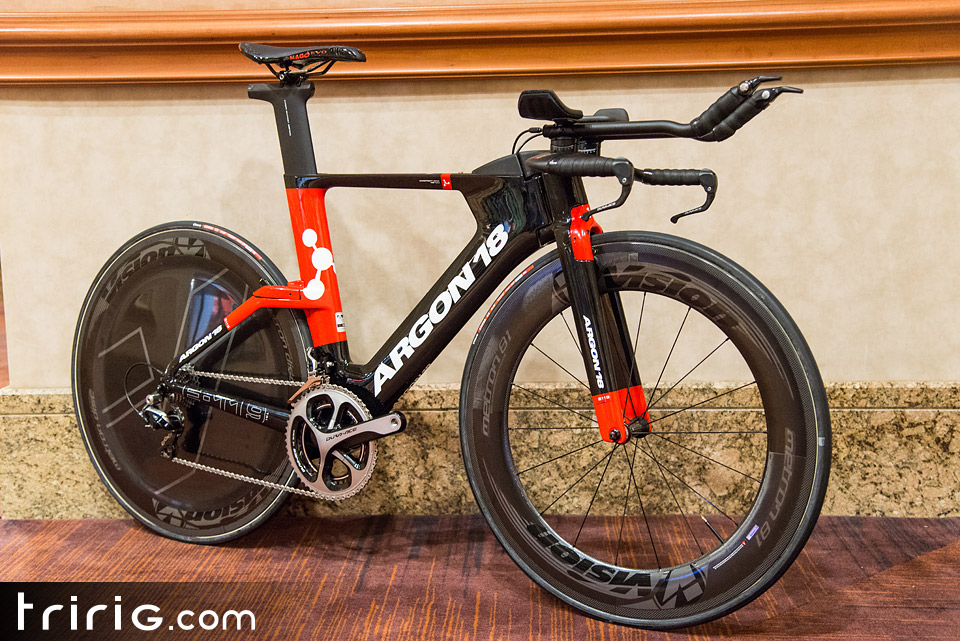 Argon18 is probably the biggest news in triathlon at the moment. Known as the 'other' Canadian bike company, they did not really expect a bike from them right now, but their timing could not be better. The E119 is the only major bike to be released in 2015 (other than the LOOK 796 Monoblade). We've got a good, detailed look at the bike in Las Vegas, and our initial impression is that Argon18 has put together an excellent platform that is sure to be very popular in the coming season.
Argon18 is probably the biggest news in triathlon at the moment. Known as the 'other' Canadian bike company, they did not really expect a bike from them right now, but their timing could not be better. The E119 is the only major bike to be released in 2015 (other than the LOOK 796 Monoblade). We've got a good, detailed look at the bike in Las Vegas, and our initial impression is that Argon18 has put together an excellent platform that is sure to be very popular in the coming season.
Despite the relative maturity of three bike designs, brakes continue to be a sore spot for many athletes, and a headache for many bike manufacturers. Many brands simply slap on a cheap OEM product, despite the problems associated with their use. But a few brands have taken the considerable time and effort required to make a truly good integrated brake. I'm talking about Trek, Felt, Cervelo (though I'm mixed on the Maguras), and now Argon18 joins that exclusive club.
For me, the front end of the bike is often the differentiating factor between a great bike and a mediocre one. And apart from brakes, that really means the bars and stem. Again, the E119 shines here. Without a closer look at the bars and actually installing one myself, I can not say for sure how the wrenching goes. But the bars look fairly simple to install and adjust. They are flippable, to provide a bit of stack height adjustment. The bikes in this picture had them in the standard "down" position, but they could be flipped to provide rise instead. That's the only adjustment you can make to the base bars, as there is no other stem or bar option available. Base bar height is not usually considered the top metric for three bike fit, so the lack of bar adjustment will not matter for most riders. But if you know that you're particularly sensitive to base bar stack, you'll want to research the E119 fit before taking the plunge here.
Beyond those key elements, the bike is pretty straight down the middle. No gimmicky tube shapes, very good closure of the space envelopes between downtube / wheel / fork, vertical dropouts (yay!), Wedge-style seat binder, and liberal use of truncated airfoils. Curiously, although the E119 uses the excellent Ritchey SideBinder style clamp, that clamp does not slide along a 10mm round rail as well as other posts. This means that it is not compatible with the 10mm round accessories from XLAB and others. Instead, Ritchey created a high hexagonal shape that they used to attach their own bottle carrier / storage unit. But that unit (and that seat post) just come with the E119 +. The standard E119 gets neither the carrier nor the hexagonal bore. Strange.
Here's an area close to my heart. I'm very, very happy to see Argon18 abandon the TRP V-brake in favor of the far superior centerpull design. So far Felt, Trek, and now Argon18 have all developed their own excellent centerpull designs. I love this trend, even if it means I'll sell fewer brakes.
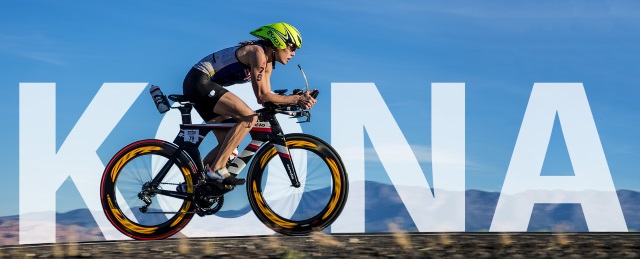
Last weekend was the World Championship of triathlon IronMan Kailua-Kona, Hawaii
Here attached a table that analyzes bikes, components and accessories came with TOP TEN athletes.
According to official records, the statistical base on which it was made the count is as follows:
Official data KONA HAWAII IronMan:
Force sensors: the vast majority (458) have been used pedals VEKTOR GARMIN
Pedals: pedals were most used Shimano (739) and Look (702), but quite a few even Speedplay (387)
Wearable GPS: nearly all Garmin (1493)
Bike: the most used were Cervelo (522) Trek (275) Specialized (218) Felt (153) and Argon18 (101)
Wheels: ZIPP has done the lion's share (2006)
In the order: ISM (732) Fizik (396) Specialized (294) and Cobb (228)
Profile Design aerobars: (563) 3T (415) Bontrager (256) Vision (205) and Zipp (120)
: Rudy Project helmets (639) (369) Specialized (257) and Garneau (135)
Many of these products are marketed by MOTUS. Visit the online shop www.motusport.it and www.motustriathlon.com to see and buy some products used by athletes who competed in the latest edition of Ironmna HAWAII World Championships.
PRODUCTS TABLE TOP TEN KONA 2015
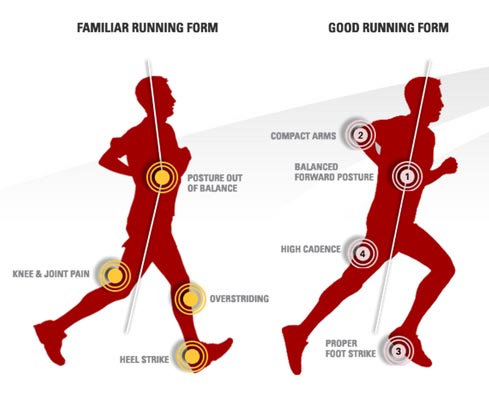 The importance of technology
The importance of technologyThe goal of the other is to help runners avoid injury by teaching a racing technique effective and low impact. Just like in other sports, we must listen to the experts to get the most. Whether you are a beginner or high level racers, our "Learn To Run" initiative helps runners to run better and healthier.

The aim of the initiative "Learn To Run" is a race proven runners to teach effectively and safely to avoid injury and run faster with less effort. Once mastered, proper technique allows you to run more effectively, less fatigue and less risk of injury.
If praticaste any other sport would you take lessons? Just as the movement than any other sport, also may be effective and ineffective. Other points to match the start of classes of racing technique throughout the country with the launch of our shoes, to help walkers to learn to run so easier, faster and with less risk of injury. Even if we were born to run, our body must be in good shape to be truly efficient.
During running, the body should be upright, balanced and protrude forward of ankles. The deep muscles are responsible to keep good posture and your back straight. The chest must push forward slightly and your arms should push back while the hips and knees extends.
Your hands should remain close to your chest, making a short swing and contained. Push back the arms and relax them by taking them forward. To help your legs to push in a straight line and the foot to rest in line with the knee bent, your arms should move back and forth swinging sideways as little as possible, while the elbows must not ever arriving in front of the trunk, unless you run a very sustained speed. The trunk must allow the foot to rise quickly and extend behind the Centre of gravity of the body. Your feet should rest on the ground in line with your knees bent, while the leg starts moving back below the body. Even if the foot rests on the ground slightly advanced position compared to its body, you will have the feeling that it is directly below it. Many people support the entire surface of the foot on the ground at the same time (midfoot). However, depending on the genetic characteristics, the type of shoes worn and the surface on which it runs, it may be a slight forefoot support or a lightweight heel support.
The support of the foot should be light and fast, at a rate of about 180 steps per minute. Running barefoot can help a lot to understand and master the proper technique for the ride.
Take at least 1/3 of the distance on natural or irregular surfaces, such as grass, gravel or cobblestone: This helps you balance your muscle structure and strengthen the stabilizing muscles.
Many sporting goods stores are keeping travel lessons right now: contact your nearest store! If you don't do this, esortalo to begin with. There are many valid methods to learn proper technique, here are a few:
Other calls on all runners to do at least a bit of barefoot running. In addition to learning proper technique and strengthen your feet, running barefoot also brings many other benefits. There has never happened to run barefoot so far?
You can see and buy all models of running shoes the OTHER by clicking here

Last weekend was held the World Championship triathlon IronMan Kailua-Kona, Hawaii
Here attached a table that analyzes bikes, components and accessories TOP TEN in support of athletes.
By official data, the statistical base on which it was made the count is as follows:
Official data KONA HAWAII IronMan:
Force sensors: the vast majority (458) have been used pedals VEKTOR GARMIN
Pedals: pedals more used were Shimano (739) and Look (702), but quite a few even Speedplay (387)
Wearable GPS: nearly all Garmin (1493)
Bike: the most used were Cervelo (522) Trek (275) Specialized (218) Felt (153) and Argon18 (101)
Wheels: ZIPP has done the lion's share (2006)
Saddles: in order ISM (732) Fizik (396) Specialized (294) and Cobb (228)
Aerobars: Profile Design (563) 3T (415) Bontrager (256) Vision (205) and Zipp (120)
Helmets: Rudy Project (639) Giro (369) Specialized (257) and Garneau (135)
Many of these products are marketed by MOTUS. Visit the online shop www.motusport.it and www.motustriathlon.com to view and purchase some of the products most used by athletes who competed in the latest edition of the World Championships in Ironmna HAWAII.
PRODUCTS TABLE TOP TEN KONA 2015
 Stretching it or stretching?
Stretching it or stretching?Gli anni ' 80 were undoubtedly the period in which the validity of stretching to supplement training in sport in General and in the running in particular, reached its maximum splendour. They passed by the practice of ballistic stretching, which was based in the execution of a number of bounces, the use of static stretching. Was the book of Bob Anderson, released in 1982 to start this revolution in the understanding and practice thetendon and muscle stretching. Always attentive to the news from the training methodology, I began to practice the new method of stretching first on myself and then on my runners. Practicing stretching slowly became a way of socializing at the end of training. The hold the position for 30 "/40" gave no doubt relief. They spent a number of years and in the meantime I began to be less and less convinced of its effectiveness. Between 1999 and 2000 I advised my students to stop making stretching to see what would happen. Were amazed at the change in my attitude, but I followed him. I didn't notice any major difference between DOS and Don'ts stretching.
In recent years, specialized magazines and books have appeared in publications that have conflicting ideas about how to use the stretching in athletes. The crisis that struck me at the beginning of the year 2000, apparently, struck others as well. Some authors write just that stretching is bad. Authoritative scientific research (g. Alberti-L. Onagaro 2009) demonstrate that stretching of the calf and quadriceps can be negative before the power sports that require fast executions and large applications. You're a runner, although go strong, speed and strength that you express in your running is not very high so the problem doesn't concern you. Other concerns have emerged about the static nature of stretching that would seem to do then fine muscles especially if performed without heating. My crisis was generated by the opportunity to do some stretching in static form. When I did it I had the same pains of when, as a child, my coach made me do the ballistic stretching and my uncle Clyde that I know pain. I was very perplexed about whether debauchery did well. It's true, Bob Anderson in his book spoke of tension development easy and tension, but did not speak of pain. At the height of my crisis I met Jim and Phil Wharton, father and son physical therapists in New York specialize in running. It was the beginning of the end of my crisis.
In the following lines illustrate what, in my experience, is the proper way to do stretching.
What is stretching? Literally translated from English means "stretching". Is the practice of a number of useful exercises to improve flexibility and joint mobility. They are therefore said to a muscle is flexible when she developed a joint mobility to allow the various segments concerned travel in space and extensibility that allows the muscle to stretch easily. That said, I don't think I want you to become "jointed" as a dancer in the scale.
Here are some good reasons to make stretching (f. Madore 2012).
In view of these points I want to see how you're going to do stretching.
The opportunity to do some stretching before practice or the race there is a great discussion. Some authors (j. Weineck 2013) suggest doing 5 ' warm up before stretching. Sometimes for us runners is impossible, oddly enough, do a little jog in the start area workout or race. That's why I thought about 3-4 exercises of vascularization who just intended to prepare the body to stretching. It's run of the thrusts on the balls of your feet and knees towards your chest collection. Lately I added 3-4 sets of 30 "walk in place. The method of stretching that I propose is a Variant of Wharton's method. Is based on matching the breathing exercise: in the resting phase you breathe while undergoing elongation you exhale.
Before the race the runners more agitated, that "feel" emotionally the race must perform the exercises slowly with pretty deep breaths, while the quieter Council a dynamic that involves running a little more then a breathing more frequently. Each exercise is designed to never charge your back is repeated for 5-10 times. After the run I recommend stretching after the shower, in a dry, warm environment. While stretching the trigger slack is done standing, after running, relying always on the principle of respiration, is done on the ground, better on a mat. The perfect place to do the stretching of the pre race after race is apply the diaphragmatic breathing or abdominal. Who can't just breaths rather deeply, but never stay. This system ensures the blood supply to muscles with undeniable benefits.
(by Shashi Magar from fulviomassini.com)
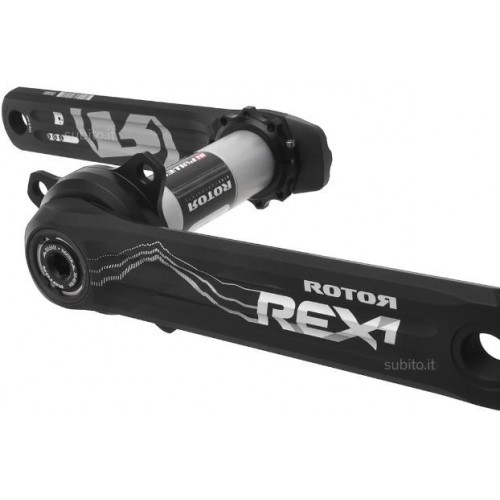 For sale by MOTUS new home power meter ROTOR. Available in different versions, the new power meter is used in various disciplines of cycling: MTB, ROAD, TRIATHLON.
For sale by MOTUS new home power meter ROTOR. Available in different versions, the new power meter is used in various disciplines of cycling: MTB, ROAD, TRIATHLON.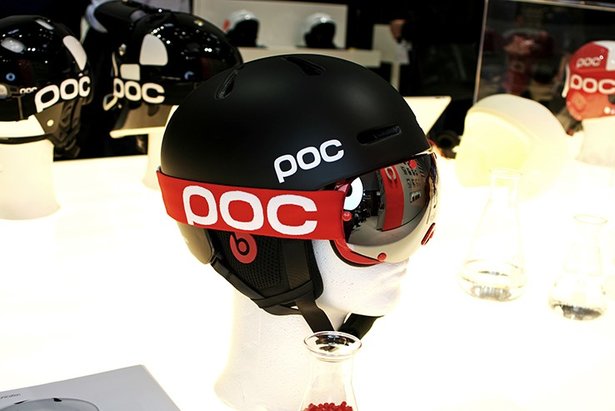 TIPS FOR CHOOSING A HELMET FROM SCI/SNOWBOARD
TIPS FOR CHOOSING A HELMET FROM SCI/SNOWBOARD
You like skiing at full speed, pull the curves to the Max, tossed in the Woods and use the trees as if they were a race stakes, do jumps and acrobatics in the snow park? Very well.
Whether you are a skier oldschool, whether you're a rider or a freerider is definitely happen to make a close encounter with a rock, a tree, a plate of ice, another skier or why not, with a good skier. No doubt the helmet is what you need. The helmet is lightweight, warm and more than anything else, it can save your life. Don't think about it too much and get one for next season.
Here are some tips to help you in choosing your helmet
1. How a helmet?
A ski helmet is designed to protect you against the obstacles you may encounter in the mountains: rocks, other skier, trees, ice or catastrophic falls. In addition a ski helmet that features climbing helmets or did not skate: ear protection, adjustable ventilation, protection from cold and compatibility with a ski mask.
✓ a helmet is generally composed of two layers
The outer layer consists of a hard surface that will protect your head against impact and sharp objects. The outer shell will propagate the shock over a large surface of the helmet, by reducing the risks.
The inner layer is generally made up of expanded polystyrene. Its aim is to absorb the impact and this helps avoid injuries. Inner layer acts like a mousse that you compress by absorbing the shock, leaving your head intact.
✓ fabrication technology
The technology of IN-Mold construction allows to merge, way, the inside with the outside. In this way, the helmet will be formed from a single piece. The advantage is that this technology brings lightness to your helmet, creates a more efficient ventilation and allows you to better absorb the impact in the event of a collision.
With the Classic fusion instead the helmet consists of two pieces, the exterior and Interior. The helmet exterior is made of hard plastic, while the inner polystyrene. The two parts are glued together. This technique is less expensive but the helmet is heavier and is harder to get an adjustable ventilation.
2. HOW to CHOOSE a helmet?
Find the right size: you have to measure the circumference of your head; for this operation you need to bring a sewing and meter you need to place it above the ears and above the eyebrows. So you get a circumference ranging from 52 to 65 cm. Once you have this information use it to choose a helmet that fits your size.
Several criteria influence the choice of a helmet.
Weight: if you choose a lightweight helmet, you have the tendency to forget you have worn and your movements will not be penalized by the weight.
Ventilation: adequate ventilation will allow you to adjust the temperature and let out sweat. It is preferable for this choose helmets that have adjustable ventilation and allowing you to change the air flow while you're skiing.
Hygiene: many helmets have the internal protection and removable linings and thus washable.
Audio: some helmets have built-in audio headphones or have the ability to integrate your headphones.
Bearings and covers: certain models are sold with removable pads to adjust the helmet to fit the shape of your head. These inserts can be removed and cleaned, particularly should not be underestimated given the State in which they will be after a day of skiing.
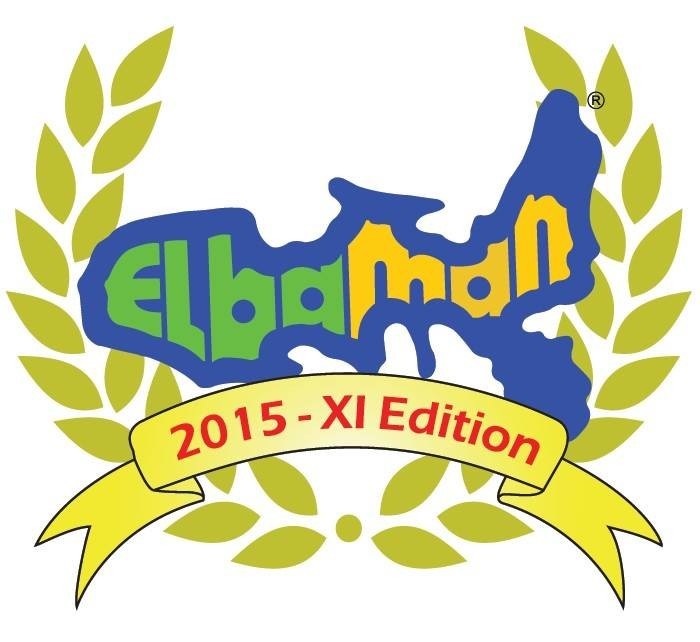 Was held Sunday September 27 the usual annual triathlon long distance ELBAMAN, in double Half Ironman and Ironman distance.
Was held Sunday September 27 the usual annual triathlon long distance ELBAMAN, in double Half Ironman and Ironman distance. TIPS FOR CHOOSING A SKI/SNOWBOARD HELMET
TIPS FOR CHOOSING A SKI/SNOWBOARD HELMET
You enjoy skiing at full speed, pull the curves to the Max, tossed in the Woods and use the trees as if they were racing stakes, do jumps and acrobatics in the snow park? Very well.
Whether you are a skier oldschool, whether you're a freestyler or a freerider is definitely happen to make a close encounter with a rock, a tree, a plate of ice, another skier or why not, with a good skier. No doubt the helmet is what you need. The helmet is light, keeps you warm and more than anything else, it can save your life. Don't think about it too much and get one for next season.
Here are some tips to help you in choosing your helmet
1. How DID a helmet?
A ski helmet is designed to protect you against the obstacles you may encounter in the mountains: rocks, fallen trees, ice or other skier, ruinous. In addition a ski helmet possesses characteristics that are not climbing or helmets skateboards: ear protection, adjustable ventilation, protection from cold and compatibility with a ski mask.
✓ a helmet is generally composed of two layers
The outer layer consists of a hard surface that will protect your head against impact and sharp objects. The outer shell will propagate the bump on a large surface of the helmet, by reducing the risks.
The inner layer is made of expanded polystyrene, generally. Its aim is to absorb the impact and this helps avoid injuries. Inner layer acts like a mousse that you compress by absorbing the shock, while keeping your head.
✓ fabrication technology
The IN-Mold construction technology allows to merge, which is responsive, the inside with the outside. In this way the helmet will be formed from a single piece. The advantage is that this fabrication technology brings lightness to your helmet, creates a more efficient ventilation and allows you to better absorb the impact in the event of a collision.
With the Classic fusion instead the helmet consists of two pieces, the exterior and the Interior liner. The helmet exterior is made of hard plastic, while the internal part in polystyrene. The two parts are glued together. This technique is less expensive but the helmet is heavier and is harder to get an adjustable ventilation.
2. HOW to CHOOSE a helmet?
Find the right size: you have to measure the circumference of your head; for this operation you need to bring a tape sewn and you have to place it above the ears and above the eyebrows. You will get a circumference ranging from 52 to 65 cm. Once you have this information use it to choose a helmet that fits your size.
Several criteria influence the choice of a helmet.
Weight: if you choose a lightweight helmet, you will have a tendency to forget to have it worn and your movements will not be penalized by the weight.
Ventilation: adequate ventilation will allow you to adjust the temperature and to release perspiration. It is preferable for this choose helmets that have adjustable ventilation and allowing you to change the air flow while you're skiing.
Hygiene: many helmets have the internal protection and removable linings and thus washable.
Audio: some helmets have integrated audio headphone or have the ability to integrate your headphones.
Bearings and covers: certain models are sold with removable bearings to adjust your helmet and fit the shape of your head. These inserts can be removed and cleaned, especially not to underestimate visa status will be after a day of skiing.
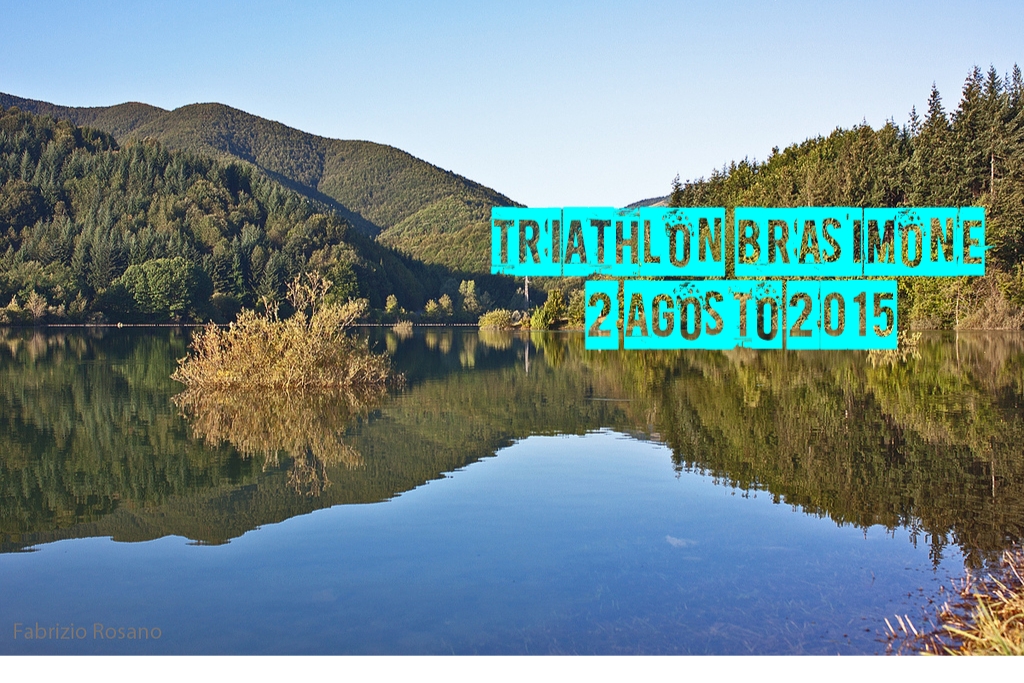 OLYMPIC TRIATHLON – BRASIMONE 7/20/2014 – Lake BRASIMONE
OLYMPIC TRIATHLON – BRASIMONE 7/20/2014 – Lake BRASIMONEMEN
1 BAILEY 1 1 MANUEL FRIESIAN EL TEAM 1 0 — 02:09:54
2173 BERTACCINI 2 LUCA TRANSITION AREA S3 2 + 0 2:15:39 00:05:44
3 3 3 FEDERICO PIERI LUCCA TRIATHLON ASD S1 3 0 2:17:17 + 00:07:23
7 4 4 CESAR EMANUELE FORHANS S3 1 TEAM 4 2:17:47 + 00:07:53
5 5 5 RISPOLI SBR 1 ALESSIO 3 S2 2:18:22 + 5 00:08:28
6 6 9 GARDNER DAVID G.P. TRIATHLON S2 2 2:20:14 + 6 0:10:20
7 7 20 LUCACCIONI EMANUELE PERUGIA TRIATHLON S4 1 2:20:27 7 + 0:10:33
8 8 14 CUCCI's EMILIANO CANOTTIERI NAPOLI S1 1 2:20:36 8 + 0:10:42
9 9 33 IURI ALVISI FAENZA S4 9 2 TRIATHLON 02:21:04 + 00:11:09
10 10 10 PASQUARELLA ALBERTO EDERATRIATHLONFORLI M1 1 2:21:25 + 10 0:11:31
WOMEN
1 1321 BATTISTONI ELISA S3 1 0 707 — 2:26:18
2 2322 PERONCINI ELEONORA CUS PARMA MEDEL S2 0 2:34:56 2 + 00:08:37
3 3323 ANNALISA TRIATHLON S2 G.P. BERTELLE 0 2:36:48 + 3 0:10:30
4 ELISA TRIATHLON ATOMIC ROCKETS 4324 S3 1 4 2:38:23 + 00:12:05
ELENA CECCHETTO 5329 5 A3 1 02:44:03 5 M1 + 0:17:44
6330 POLES 6 FRANCESCA S.N. CASTIGLIONE 2 6 2:45:27 + S3 00:19:09
7331 MARY ATHLETICS KOULTCHENKOVA 7 M 7 2:47:40 1 S4 + 0:21:21
8326 SARTI 8 GESSICA FAENZA 8 2 TRIATHLON M1 2:49:27 + 00:23:08
CHIARA LUCCA 9 GIANGRANDI 9345 TRIATHLON 3 M1 ASD 9 2:51:37 + 0:25:18
10332 10 CHAN JESSICA FERALPI TRIATHLON S4 2 02:52:09 + 10 0:25:50
FULL LIST: CLICK HERE
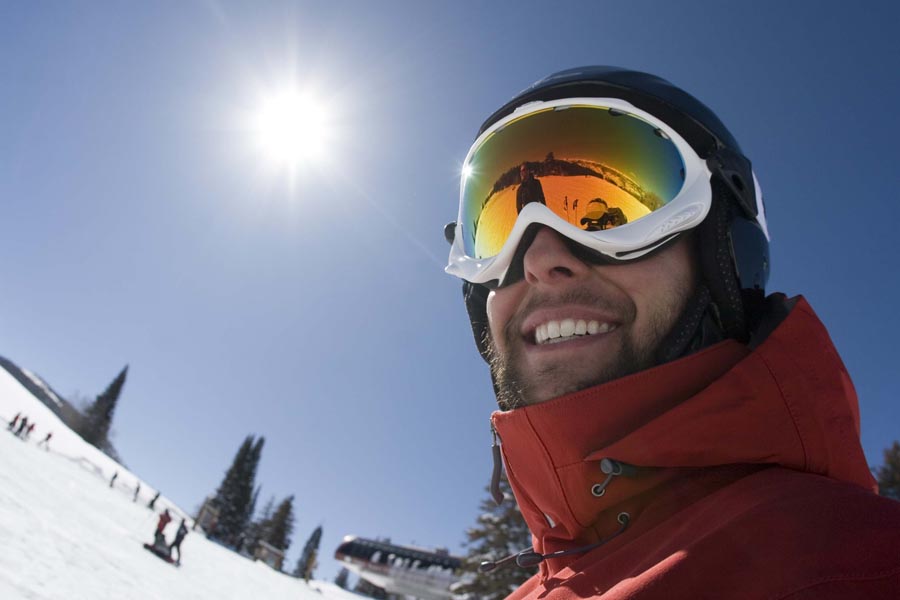 The ski mask: Discover tips for choosing
The ski mask: Discover tips for choosingWhen should you buy a ski mask, is very important to consider some key factors that can topple the choice of a product over another: material, shape, atmospheric conditions of use and compatibility with helmet or glasses.
The masks of the best brands are made of TPU (thermoplastic polyurethane), to ensure a double advantage:
-deformability at any temperature, to prevent the mask become stiffer if intense cold;
-better absorption of shocks, to prevent cracking and be dangerous after an impact.
Not all masks fit similarly to your face: MOTUS range are both larger masks that fit to visi -wide average, both models closer to visi -average small women and young boys, both forms of standard sizes to suit all face types.
To deal with whatever the weather, there are masks with specific lenses, can so optimal viewing in any situation. To make sure you don't see you ever in trouble, consider bringing with you a spare mask suitable for different conditions: you avoid problems of vision, allowing you to enjoy the most of your output.
- Neve/nebbia:
Transparent or yellow lenses
Usage: increase contrast for optimal visibility in low light conditions, bad weather, and on special occasions such as night skiing.
- Cloudy days:
Lenses: orange or blue colour, ideal light conditions medium-low.
Use: for those who want to have a "purpose", able to adapt to different conditions
- Sunny:
Lenses: e/o dark mirror with anti-glare
Usage: sunny days, primavera/estate glaciers.
- Variables:
Lenses: brown colour, light or mirror
Usage: give good visibility in alternating sole/nubi.
A final factor to be reckoned with is the compatibility with helmet mask or with eyeglasses: as almost all ski goggles are helmet-compatible, there are some models that create problems of fit and therefore difficult to fit to your face.
If you're a carrier of eyeglasses, know that there are specific masks sovraocchiale enhance your corrective lenses inside the mask frame.
The characteristics of each form are available in the single article. In this way, choose your ski mask from the comfort of your home in our online shop will be simple.
To see the offer MOTUS goggles CLICK HERE
MOTUS is dealer of ski goggles to POC and SCOTT brand
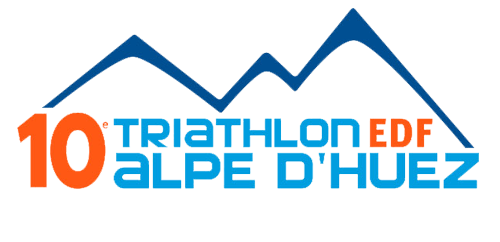 It is raced on July 31, the 10th Edition of the Alpe d'Huez Triathlon distances 2.2 K, 115 k and 22 k bike ride and 877 were the finishers.
It is raced on July 31, the 10th Edition of the Alpe d'Huez Triathlon distances 2.2 K, 115 k and 22 k bike ride and 877 were the finishers.The final victory went to Frenchman Arnaud Guilloux and the British Emma Pooley. Large blue patrol of #ITAFinisher, among which are highlighted Pierluigi Senor, first Italian and 22°; John Caesar category winner M50-54; Michela Menegon, before girls and fifth of his AG; and Luisa Fumagalli, silver.
Fed the athletes group of Siena at the finish of this beautiful competition: in addition to the already mentioned Caesar and Mahmood, of note is the good performance of David Maguire and Pierantonio Daniele
MEN
Arnaud GUILLOUX (FRA), 5:55 ' 14
James CUNNAMA (RSA), 5:57 ' 04
Scott DEFILIPPIS (USA), 5:57 ' 27
Sven VAN LUYCK MAN (BEL), 5:58 ' 34
Colin ARROS (FRA), 5:59 ' 02
WOMEN
Emma POOLEY (GB) 6:21 ' 48
Mary Beth ELLIS (USA) 6:27 ' 45
Jeanne COLLONGE (FRA) 6:36 ' 07
Ester HERNANDEZ (ESP) 6:55 ' 34
Carrie LESTER (AUS) 07:03 ' 51
FULL LIST: CLICK HERE
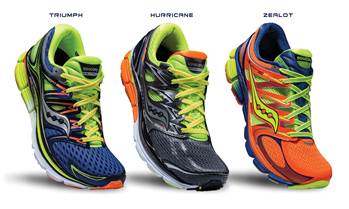 Light as a racing shoe, but cushioned like a training neutral. Or dynamic and reactive, but with a pinch of structure that makes it almost stable. No, Maxi, but the Natural style. Could Saucony have all gone crazy?
Light as a racing shoe, but cushioned like a training neutral. Or dynamic and reactive, but with a pinch of structure that makes it almost stable. No, Maxi, but the Natural style. Could Saucony have all gone crazy? Take a look at their latest collection of running shoes with your eyes and the more "traditional" logic you would say!
Yet they have taken this time again ....
 Saucony is undoubtedly one of the most innovative brands in recent years. Unlike the "big" brand of sport, often forced to make small steps to avoid risking false steps, brands such as Saucony, which are also among the big ones in the running market, have shown in the last 4 or 5 years Know how to move quickly and dynamically. So much innovation. Any chance. Errors, of course, that spent were erased in the most radical way: starting from the head where it was wrong. Let's remember that Saucony was the first to make a very radical choice: lower the differentials of all his 8 mm running shoes . A choice that has left "on the street" so many dissatisfaction, some controversy in science, but also many new customers, as its sales are constantly growing.
Saucony is undoubtedly one of the most innovative brands in recent years. Unlike the "big" brand of sport, often forced to make small steps to avoid risking false steps, brands such as Saucony, which are also among the big ones in the running market, have shown in the last 4 or 5 years Know how to move quickly and dynamically. So much innovation. Any chance. Errors, of course, that spent were erased in the most radical way: starting from the head where it was wrong. Let's remember that Saucony was the first to make a very radical choice: lower the differentials of all his 8 mm running shoes . A choice that has left "on the street" so many dissatisfaction, some controversy in science, but also many new customers, as its sales are constantly growing.
In the 2015 collection I think I have made a further step. Not only is it launching the new IsoFit technology, which actually solves some of the problems of the previous uppers, but especially because it has been able to relocate all its models in a very transversal fashion to the old (and even more insignificant categories A2, A3, A4 ... unpublished ...).
In the catalog there are very interesting evolutions of classical models such as the Triumph, the Ride and the mythical Kinvara. But above all, there are two novelties that the first can leave interdicted: Zealot and Breakthru.
I would like to talk about these novelties, as many runners have asked me for an explanation. And be prepared for a complex journey in the new geometry of running ...
 Let's start with the Breakthru that I find one of the finest shoes I have ever run with, unless my weight (74Kg) prevents me from using it for long distances.
Let's start with the Breakthru that I find one of the finest shoes I have ever run with, unless my weight (74Kg) prevents me from using it for long distances.
Her first beauty lies in her diversity: looking at her looks like a racing shoe. Low middle intersuola profile (front 15 mm and rear 23 mm), moderate amortization, but it favors reactivity. This model represents the first of the paradoxes we discussed at the beginning. A very light shoe (only 244 gr) for a neutral cushion that lies between an intermediate and a daily workout shoe. It has been constructed with an extremely lightweight and breathable upper, but also very enveloping. Padding of the tongue and collar makes it comfortable while not weighing on the structure. Interestingly, the medial area of the intersuola, designed to provide a pinch of extra strength that translates into a more pronounced support of pronation, useful to the lightest pronators, but also to those who exceed the pronation when running on very long distances.
So a real racing shoe, built with a traditional drop. For Saucony experts, I would put this model between the traditional Mirage (race) and the Ride (by training). Category? There is no: Simply dedicated to medium and lightweight runners who have a good step and are looking for a lightweight, quick shoe but with a pinch of texture.
 Zealot is the second paradigm of Saucony. Pure lightness and flexibility, for a shoe designed with a 4mm differential, to go to the Natural models and the most challenging racing shoes, but with a cushion that is almost equal to that of the Ride. With its weight of 235 grams, you should ask: Race or training shoes? I would argue for the first hypothesis. Looking at the rest of the collection, I would put this model between the Kinvara Natural Style Icon and the Ride 8 , a very lightweight, dynamic daily workout shoe.
Zealot is the second paradigm of Saucony. Pure lightness and flexibility, for a shoe designed with a 4mm differential, to go to the Natural models and the most challenging racing shoes, but with a cushion that is almost equal to that of the Ride. With its weight of 235 grams, you should ask: Race or training shoes? I would argue for the first hypothesis. Looking at the rest of the collection, I would put this model between the Kinvara Natural Style Icon and the Ride 8 , a very lightweight, dynamic daily workout shoe.
The midsole is in Powergrid + , the latest generation of Saucony compounds. This is a lightweight and very dull Eva, which allows to work with lower thickness than in the past, while maintaining a good level of amelioration. The front is very well cushioned with the 21mm thicker of the intersuola, against the 25mm of the heel, which makes it more suitable for those with more advanced support. You think the BreakThru has a thickness in the front of only 15 mm (the Kinvara has 18mm). The upper is very similar to that of Kinvara , with little collar and tongue padding and a really natural style, more inspired by freedom and total flexibility than containment.
It is the right shoe for those who are looking for a freer curve and a race with more focus on midline and forefoot. Almost a slipper, which by its nature is best suited to medium-light neutral runners and effective racing technique.
 Kinvara 6 is no longer a mystery even for Italian runners. In the US, version 5 was chosen as a shoe of the year by Runner's World. Essentially because wearing it is like not having it at your feet. Natural in style, but with a pinch of cushioning. Version 6 was left untouched in the Powergrid intersuola with a thick 18 mm in the front and 22 mm in the heel (drop 4 mm). What is winning does not change, they have had to think in Saucony, all the way has been introduced a new lacing system that wraps the middle part of the foot in a sort of cradle that makes it more firm. The weight is 218 grams.
Kinvara 6 is no longer a mystery even for Italian runners. In the US, version 5 was chosen as a shoe of the year by Runner's World. Essentially because wearing it is like not having it at your feet. Natural in style, but with a pinch of cushioning. Version 6 was left untouched in the Powergrid intersuola with a thick 18 mm in the front and 22 mm in the heel (drop 4 mm). What is winning does not change, they have had to think in Saucony, all the way has been introduced a new lacing system that wraps the middle part of the foot in a sort of cradle that makes it more firm. The weight is 218 grams.
 It's almost useless to talk about the new Triumph Iso . Always the Top Gamma shoe (unfortunately also in the price), in this new shape is a real shoe for everyday workout. Soft and cushioned, but at the same time capable of a discrete reactivity. The upper is very cozy and soft and the new Isofit lacing system makes a leap in quality in fit fit. I know someone has found it annoying at the front of the lacing, but as with any shoe, it's always good to check if it is suitable for the anatomy of your foot. But the real news is in the intersuola, in Powergrid +, lighter and more amortized. In this case, Saucony abounded by adding a mm thicker than the past. The midsole is 21 mm in the front and 29 mm in the rear. Almost a Maxi, dedicated to who is heavier and makes so many miles.
It's almost useless to talk about the new Triumph Iso . Always the Top Gamma shoe (unfortunately also in the price), in this new shape is a real shoe for everyday workout. Soft and cushioned, but at the same time capable of a discrete reactivity. The upper is very cozy and soft and the new Isofit lacing system makes a leap in quality in fit fit. I know someone has found it annoying at the front of the lacing, but as with any shoe, it's always good to check if it is suitable for the anatomy of your foot. But the real news is in the intersuola, in Powergrid +, lighter and more amortized. In this case, Saucony abounded by adding a mm thicker than the past. The midsole is 21 mm in the front and 29 mm in the rear. Almost a Maxi, dedicated to who is heavier and makes so many miles.
 A great surprise for me was Ride 8 . I must say that at first I had a certain skepticism in me with the use of a very light upper and without reinforcements sewn on a shoe designed to make many kilometers. After running for more than a hundred miles, I have to stay with every perplexity. I think it's a particularly successful version, as is usually the closest ever older sister, the Triumph. The upper also holds my weight and my foot quite flat. Surprisingly the midsole that appears immediately soft and well cushioned. This is much more than the previous version, although both have been made in Powergrid. The thickness is 18 mm in the front and 26 mm in the heel, with a drop of 8 mm, just like in the previous version. The weight, just a few years ago, would have seemed incredible for a training shoe, today those 266 grams of the man version are no longer a primacy, but they represent a good compromise. Much more than in this model has been the widespread use of Ibr + abrasive rubber that makes it certainly more durable. In addition, I found interesting the shape of the shoe which, while being absolutely neutral and free of anti-prone support, can support the bow and the slight pronation phenomena that may occur when the foot has been and the supports are Heavier.
A great surprise for me was Ride 8 . I must say that at first I had a certain skepticism in me with the use of a very light upper and without reinforcements sewn on a shoe designed to make many kilometers. After running for more than a hundred miles, I have to stay with every perplexity. I think it's a particularly successful version, as is usually the closest ever older sister, the Triumph. The upper also holds my weight and my foot quite flat. Surprisingly the midsole that appears immediately soft and well cushioned. This is much more than the previous version, although both have been made in Powergrid. The thickness is 18 mm in the front and 26 mm in the heel, with a drop of 8 mm, just like in the previous version. The weight, just a few years ago, would have seemed incredible for a training shoe, today those 266 grams of the man version are no longer a primacy, but they represent a good compromise. Much more than in this model has been the widespread use of Ibr + abrasive rubber that makes it certainly more durable. In addition, I found interesting the shape of the shoe which, while being absolutely neutral and free of anti-prone support, can support the bow and the slight pronation phenomena that may occur when the foot has been and the supports are Heavier.
 It's a few years since I follow the American brand that has its general quiz just a few steps from Boton and the Massachusetts Institute of Technology . Mr Spencer White, a science fellow who is head of Saucony's Human Performance & Innovation Lab, has become accustomed to many evolutions and revolutions. Judging by what Saucony has announced next year, I would say that the revolution is all over.
It's a few years since I follow the American brand that has its general quiz just a few steps from Boton and the Massachusetts Institute of Technology . Mr Spencer White, a science fellow who is head of Saucony's Human Performance & Innovation Lab, has become accustomed to many evolutions and revolutions. Judging by what Saucony has announced next year, I would say that the revolution is all over.
(From Runner's world - by Rosario Palazzolo)
MOTUS is Saucony Running's official dealer. For details and purchases of the entire Saucony running range CLICK HERE
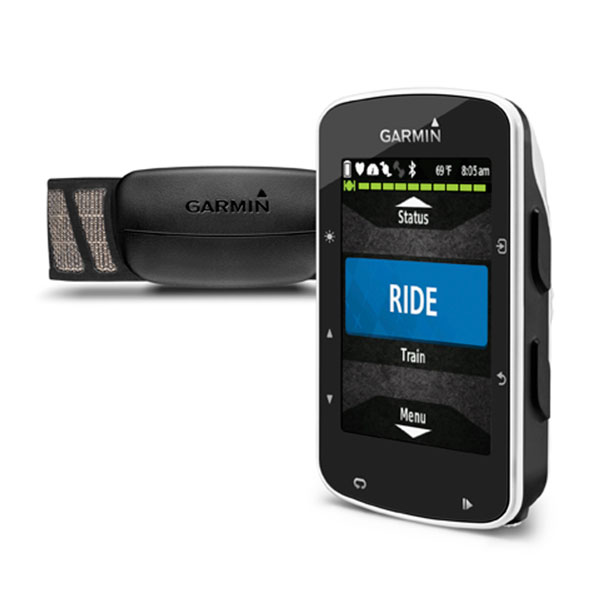 At the end of July will begin deliveries of the new BIKE GPS: GARMIN EDGE COMPUTER 520
At the end of July will begin deliveries of the new BIKE GPS: GARMIN EDGE COMPUTER 520
520 edge is the first GPS bike computer compatible with Strava segments6. Also includes a trial version to 1 month Premium Strava.
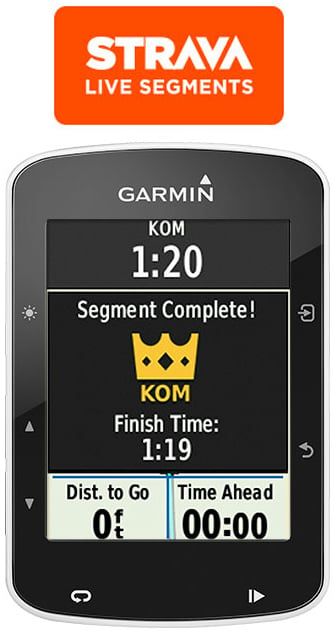
You need a motivation to complete the last few kilometres on the reels during your indoor workout? 520 edge offers this innovative function when associated with ANT + Protocol rollers. For example, if you want to train with an average power of 240 Watts, simply set the goal to Edge 520, start cycling and the rollers adjust automatically based on your goal. You can also follow a path created by another cyclist and download it from Garmin Connect, competing against virtually the athlete with which you want to compare, because the rollers adjust pedaling strength according to the slope and elevation profile of the downloaded location.
Associated with a power sensor, Edge 520 will offer you another series of functions, such as FTP detection threshold power and Watts/kg, and the dynamics of cycling ². A threshold test of power built into the tool will help you establish your reference data to be kept during your workout on reels or on the road. The heart rate monitor and 520 ³ will calculate the estimate of your VO2 max and the recovery time, which indicates how much time must pass before you can face another challenging effort.
520 compromise not edge when it comes to screen: 2.3-inch high-resolution color. We optimized the screen so you can get the most from taking into account the compact size of 520. Enjoy also the sharpness of the screen in all lighting conditions.
520 edge is compatible with ANT + sensors, including the Various bike radar™ and bikelights Varies™4, speed, Cadence, heart rate, remote controls and Edge ® and VIRB compatible scales. It also integrates with Shimano Di2 electronic shift5 to display the current running on the screen. 520 edge is also compatible with ANT + power meters, including Vectorseries.
If bound to a compatible phone and the app Garmin Connect ™ Mobile, Edge 520 offers real-time detection, alerts relating to your smartphone, social media sharing, weather and wireless uploads. The race has been completed, data can be automatically sent to Garmin Connect™, our online community where you can save, schedule, and share your bike rides.
The rugged form factor and compact and battery life up to 15 hours of 520 Edge make it perfect for adventures off the beaten path. Is also compatible with the GPS and GLONASS satellites, to use other signal options wherever you are headed.
¹ If associated with a compatible phone.
² If used with a power meter Vector or Vector 2.
³ Included in some models, sold separately in others.
4 With a future software update.
5 Compatible with Shimano Di2 electronic exchange with data management function Shimano D-Fly.
6 Premium version only starting from 20 July 2015
An original and exclusive launch expected from Garmin Italy for three new products dedicated to the world of foot race: 630 Forerunner Forerunner and 230 to which is added the Forerunner 235, the first device with heart rate measurement directly at the wrist by Garmin ™ High technology.
 Garmin Forerunner 630 is the new sportwatch dedicated to running in combining high-tech functions than its predecessors the ability to gather data on the physiological condition of the athlete, in this way even more conscious of its form and then be able to better manage stress during training or competition. Innovative new Advanced Racing Dynamics: bound to HRM4-Run heart rate monitor provides values about the Cadence, the ground contact time balanced between right/left foot and vertical oscillation, and is able to estimate maximal oxygen uptake (VO2max). But in two functions that the FR 630 is unprecedented: the "anaerobic threshold" we estimate the threshold heart rate deflection of the athlete based on heart rate and pitch of the athlete, and with Stress Score measured heart rate variability to evaluate the overall condition of the athlete to set the right workloads.
Garmin Forerunner 630 is the new sportwatch dedicated to running in combining high-tech functions than its predecessors the ability to gather data on the physiological condition of the athlete, in this way even more conscious of its form and then be able to better manage stress during training or competition. Innovative new Advanced Racing Dynamics: bound to HRM4-Run heart rate monitor provides values about the Cadence, the ground contact time balanced between right/left foot and vertical oscillation, and is able to estimate maximal oxygen uptake (VO2max). But in two functions that the FR 630 is unprecedented: the "anaerobic threshold" we estimate the threshold heart rate deflection of the athlete based on heart rate and pitch of the athlete, and with Stress Score measured heart rate variability to evaluate the overall condition of the athlete to set the right workloads.  alongside the Forerunner, Garmin has 630 Forerunner 230, a GPS running watch that lets you record data of distance, time, heart rate. But not only that, it also able to estimate maximal oxygen uptake (VO2max). This is a really important data through which the tool provides a prediction of the end time of a competition, but above all it is useful to identify the proper recovery time between workouts. As well as the Forerunner, 630 also functions as a real fitness band.
alongside the Forerunner, Garmin has 630 Forerunner 230, a GPS running watch that lets you record data of distance, time, heart rate. But not only that, it also able to estimate maximal oxygen uptake (VO2max). This is a really important data through which the tool provides a prediction of the end time of a competition, but above all it is useful to identify the proper recovery time between workouts. As well as the Forerunner, 630 also functions as a real fitness band.
Forerunner Forerunner 230 and 630 are fitted with colour touch screen. By joining to your smartphone via smart notification, you can receive on the wrist warning device messages such as email, SMS, incoming calls and calendar notifications, so you have everything under control to stay connected with friends and family. Software platform Garmin Connect IQ ™ the sportwatch can be customized with applications, widgets, screens and new data fields, so as to make it more functional for your needs. Forerunner Forerunner 230 and 630 are able to download, via Wi-Fi ®, the data directly and automatically on Garmin Connect ™ through your smartphone and the Garmin Connect Mobile application.
 The Forerunner 235 is a real jewel of technology that goes into the path of technological evolution. In fact, the new sportwatch is able to record heart rate values without using the chest strap, but acquiring a pulse from your wrist thanks to proprietary technology the company: Garmin Elevate ™. These and other values are displayed on a color interface easy to consult, so that every athlete has the opportunity to keep monitored the progress of a workout or a race. The new device provides important data for the modern runner: in addition to distance, speed, pace and heart rate, Garmin 235 is able to estimate the maximal oxygen intake. The VO2max value is important to identify the right recovery time between workouts, in addition to providing weather forecasting competition final. The color touchscreen display shows the data recorded in a clear and intuitive, so as to ensure the athlete the concentration required to achieve its objective. Forerunner functions 235 smart notification through which you can view directly on the device, your smartphone, called notifications, sms and e-mail. Using audible alerts, the athlete is kept informed on the progress of his race and then motivated to keep up the pace. Simple and unobtrusive design, they can be worn every day, working also as a fitness band. Garmin Forerunner 235 is compatible with the new Connect IQ ™ platform that can be customized with data fields, widgets and applications, making it even more functional to the needs of athletes.
The Forerunner 235 is a real jewel of technology that goes into the path of technological evolution. In fact, the new sportwatch is able to record heart rate values without using the chest strap, but acquiring a pulse from your wrist thanks to proprietary technology the company: Garmin Elevate ™. These and other values are displayed on a color interface easy to consult, so that every athlete has the opportunity to keep monitored the progress of a workout or a race. The new device provides important data for the modern runner: in addition to distance, speed, pace and heart rate, Garmin 235 is able to estimate the maximal oxygen intake. The VO2max value is important to identify the right recovery time between workouts, in addition to providing weather forecasting competition final. The color touchscreen display shows the data recorded in a clear and intuitive, so as to ensure the athlete the concentration required to achieve its objective. Forerunner functions 235 smart notification through which you can view directly on the device, your smartphone, called notifications, sms and e-mail. Using audible alerts, the athlete is kept informed on the progress of his race and then motivated to keep up the pace. Simple and unobtrusive design, they can be worn every day, working also as a fitness band. Garmin Forerunner 235 is compatible with the new Connect IQ ™ platform that can be customized with data fields, widgets and applications, making it even more functional to the needs of athletes.
For the launch of three new products for the foot race, Garmin Italy flies overseas to present, and exclusively to a group of Italian athletes entered the 42 kilometers of the Big Apple, the new Forerunner family designed for demanding runners, as the Italian quattrocento shipment Born To Run the New York City Marathon the next November 1 that on the eve of the race will participate in the Gala presentation of new sportwatch Garmin. But not only because these marathoners will experience first hand the products over the collective training planned in Central Park with the Athens 2004 Gold Stefano Baldini and Fulvio Massini trainer in the days before the big event.
 The highlight of the initiative will be on the eve of the marathon, Saturday 31 October, with the exclusive meeting between the technicians and the 400 members of the expedition of Born To Run: in this occasion will host the premiere of the Forerunner, 630 230 and 235, with valuable advice, coaches and technicians on proper use of new sportwatch. In fact, to witness the baptism of Forerunner there will be Stefano Baldini who alongside Fulvio Massini and Silvia Schiapparoli (sports & Outdoor Marcom Manager of Garmin Italy) will run the New York City Marathon wearing the three newcomers.
The highlight of the initiative will be on the eve of the marathon, Saturday 31 October, with the exclusive meeting between the technicians and the 400 members of the expedition of Born To Run: in this occasion will host the premiere of the Forerunner, 630 230 and 235, with valuable advice, coaches and technicians on proper use of new sportwatch. In fact, to witness the baptism of Forerunner there will be Stefano Baldini who alongside Fulvio Massini and Silvia Schiapparoli (sports & Outdoor Marcom Manager of Garmin Italy) will run the New York City Marathon wearing the three newcomers.
Of course Garmin Italy will be supporting all our countrymen: in the days before the competition Italian staff will be present at the expo area of the New York City Marathon, the nerve center for the withdrawal of the breastplate, to provide assistance and support "to the thousands of Italian runner. All project related to the launch of the new Forerunn will be documented by a video that will be produced and "shot" (including) with the action cam Garmin VIRB XE.
Garmin Forerunner 630 will be available in the best stores from November 2015 at a suggested retail price of 399.00 Euro 449.00 Euro and the full bundle with heart. To purchase it from MOTUS at the discounted price of 339.15 euro (euro 381.65 bundle version) CLICK HERE
Garmin Forerunner 230 will be available in the best stores from November 2015 at a suggested retail price of € and 249.00 Euro 299.00 per bundle version with heart. To purchase it from MOTUS at the discounted price of euro 254.15 (296.65 euro in the bundle version) CLICK HERE
Garmin Forerunner 235 will be available in the best stores from November 2015 at a suggested retail price of 349.00 euros. To purchase it from MOTUS at the discounted price of 296.65 € CLICK HERE
 At the end of July, begins shipping the new GARMIN GPS BIKE COMPUTER: EDGE 520
At the end of July, begins shipping the new GARMIN GPS BIKE COMPUTER: EDGE 520
Edge 520 is the first GPS bike computer compatible with segments Strava6. It also includes a test version 1 month Premium Strava.

You need a motivation to complete the last few kilometres on the reels during your indoor training? Edge 520 offers this innovative function when bound with ANT + Protocol. For example, if I wanted to train with an average power of 240 Watts, simply set the goal to Edge 520, start pedalling and the rollers adjust automatically depending on your goal. You can also follow a path created by another cyclist and download it from Garmin Connect, competing virtually against the athlete with which you want to compare yourself, because the rollers adjust pedaling strength according to the slope and altimetry data downloaded.
Associated with a power sensor, Edge 520 will offer you another set of functions, such as FTP detection threshold power and Watts/kg, and the dynamics of cycling ². A threshold test of power built into the tool will help you establish your reference data to keep during your workout on reels or on the road. Associates the heart rate monitor ³ and 520 will calculate accordingly the esteem of your VO2 max and recovery time post-race, which indicates how long to wait before you can tackle a more challenging endeavor.
Edge 520 doesn't compromise when it comes to the screen: 2.3 inch color resolution. We have optimized the screen so you can get the most out of view considering the compact size of 520. Enjoy also the sharpness of the screen in all lighting conditions.
Edge 520 is compatible with ANT + sensors, including bike radar Ranges™ and bikelights Varies™4, speed, Cadence, heart rate radiocontroles Edge and VIRB ® and compatible scales. It also integrates with Shimano Di2 electronic shifting5 to display the current running on the screen. Edge 520 is also compatible with ANT + power meters, including the series Vector.
When combined with a compatible phone and the app Garmin Connect ™ Mobile, real-time detection, Edge 520 offers warnings about the smartphone, social media sharing, weather and wireless uploads. Once running, the data can be automatically sent to Garmin Connect™, our online community where you can save, plan, and share your racing on bikes.
Rugged and compact form factor and battery life up to 15 hours of 520 Edge make it perfect for adventures off the beaten track. It is also compatible with GPS and GLONASS, to use other options of signal wherever you are headed.
¹ when combined with a compatible phone.
² If used with a power meter Vector or Vector 2.
³ included with some models, sold separately in others.
4 With a future software update.
5 Compatible with Shimano Di2 electronic exchange systems with data management function Shimano D-Fly.
6 Premium Edition only starting from 20 July 2015